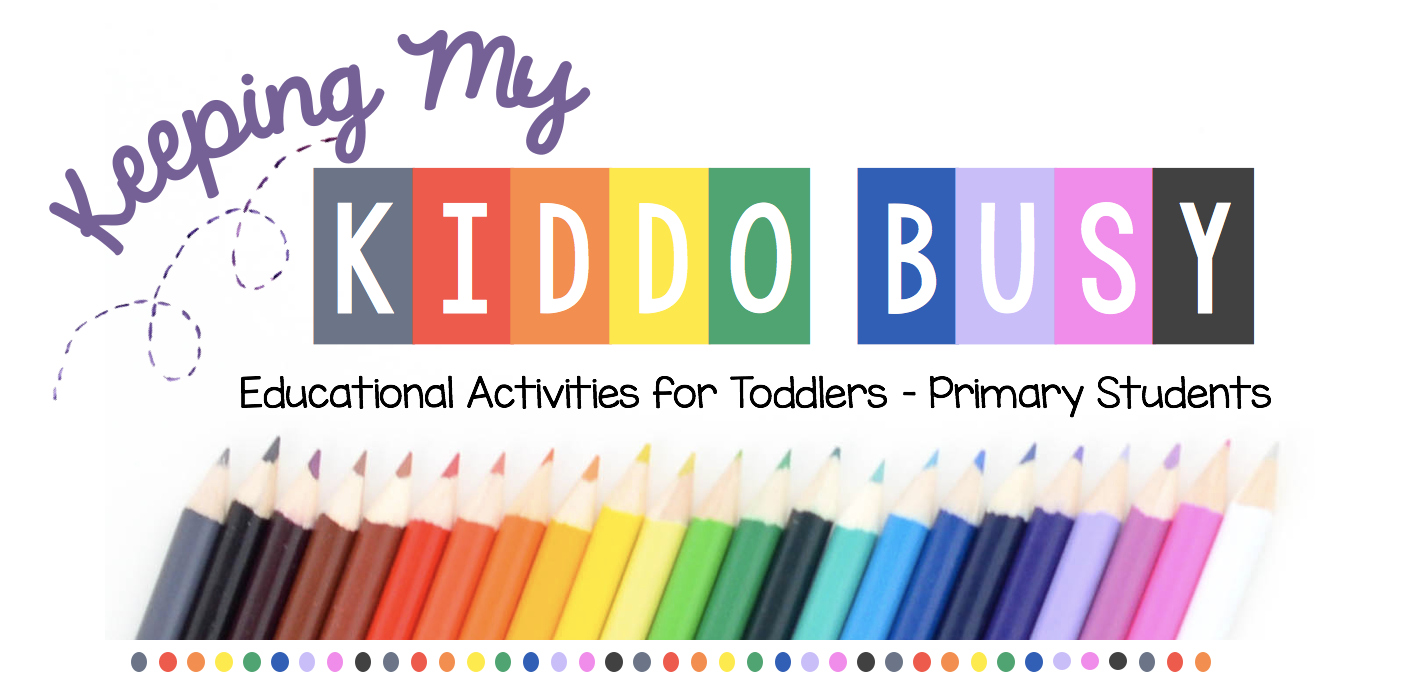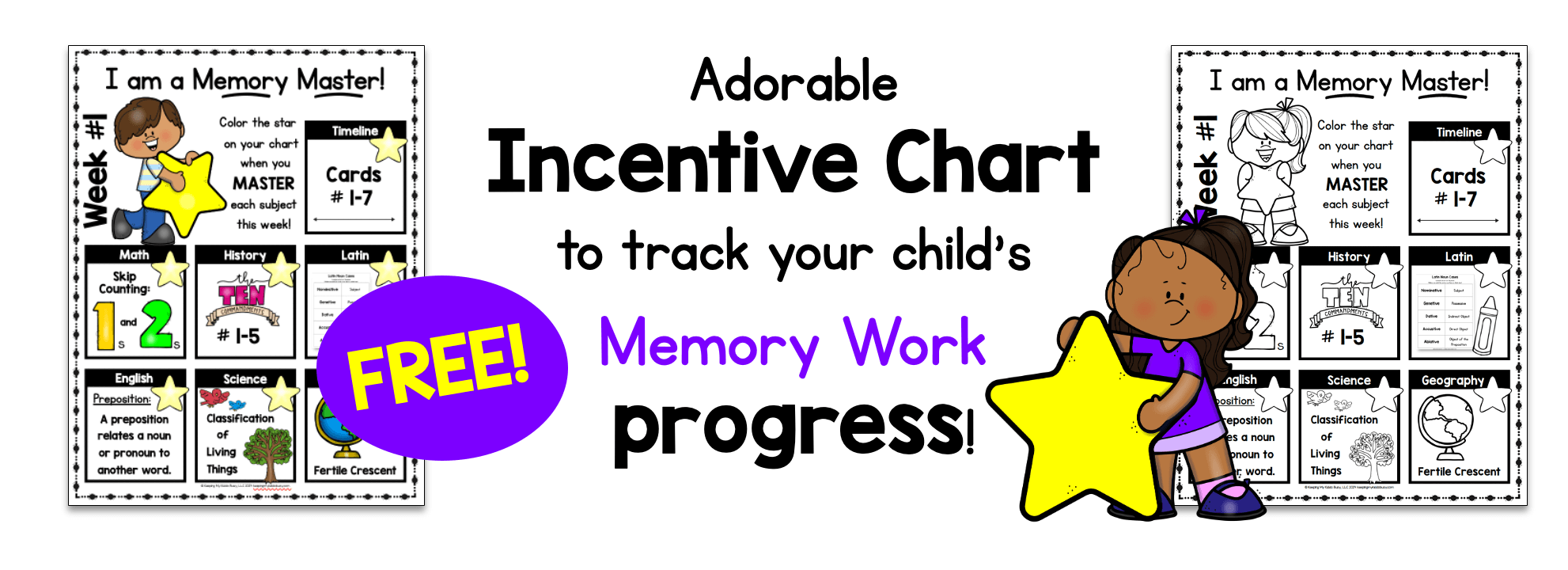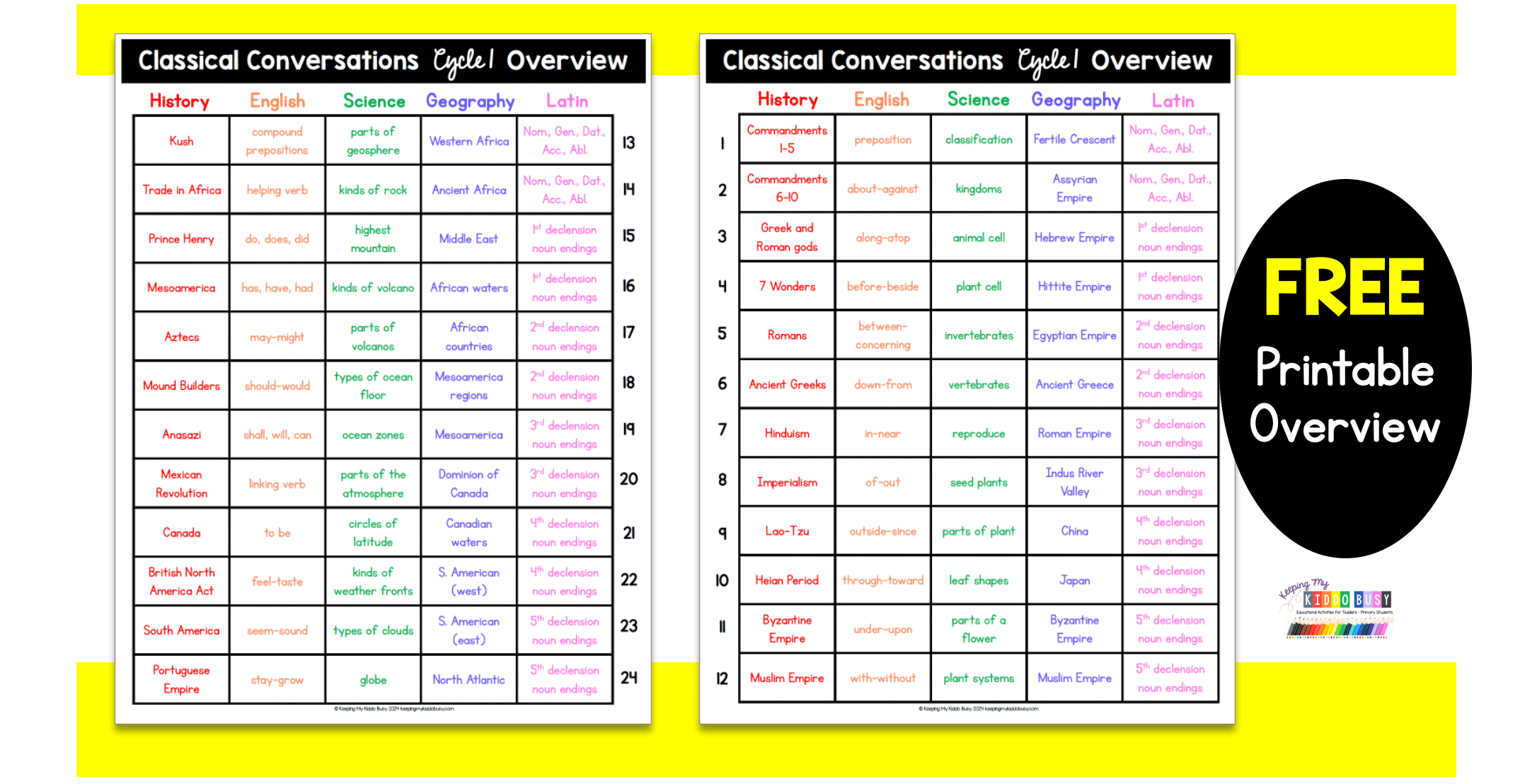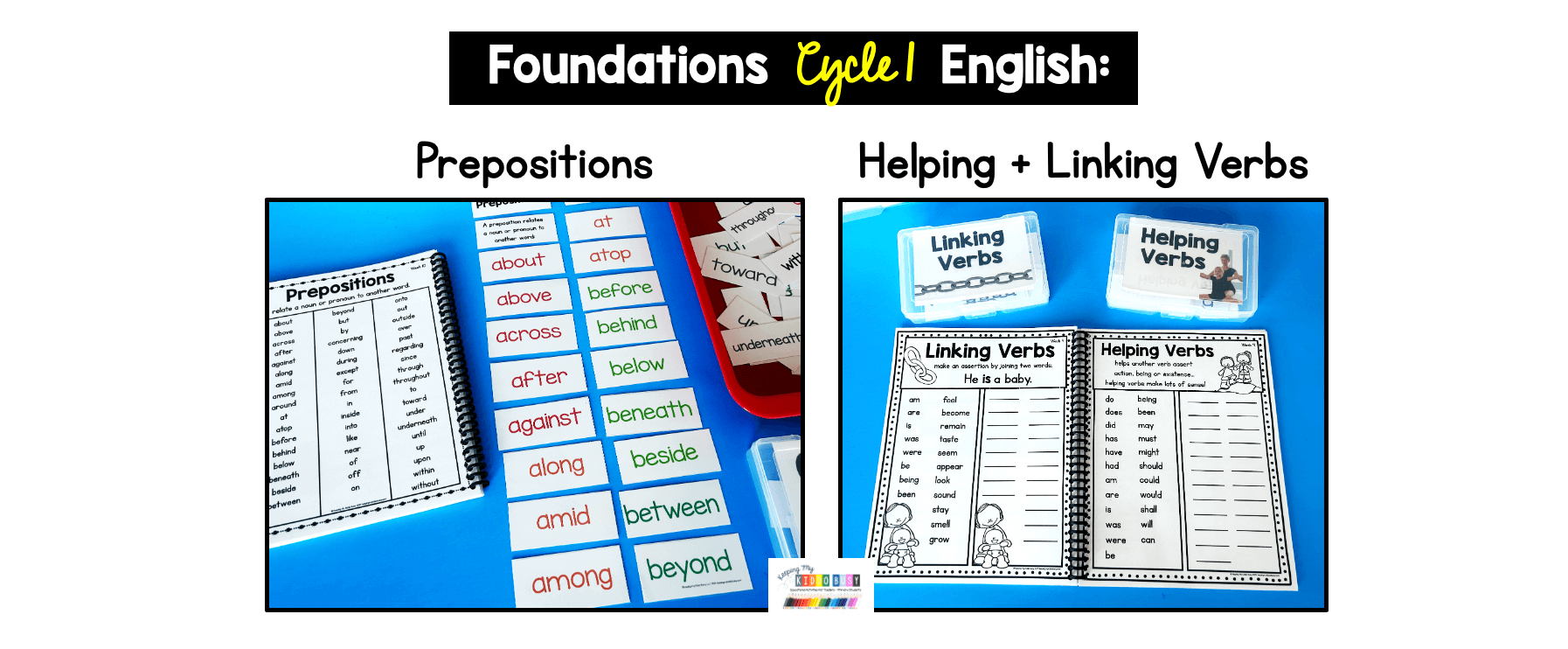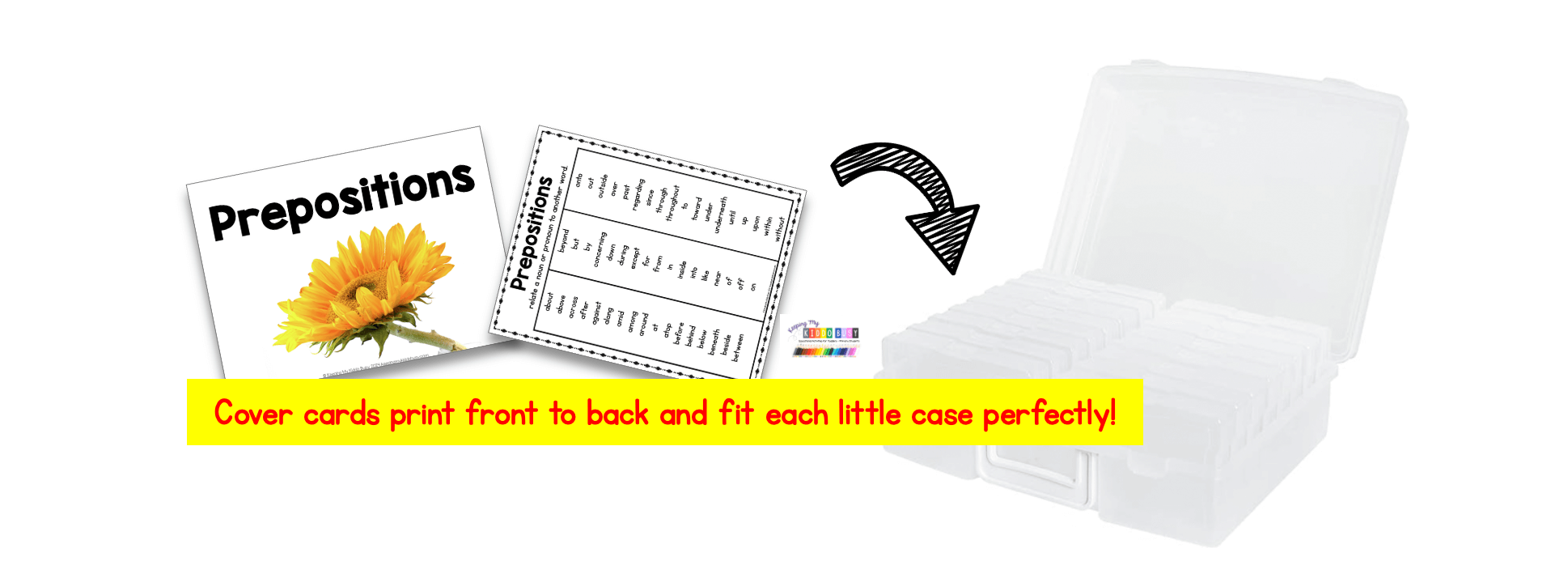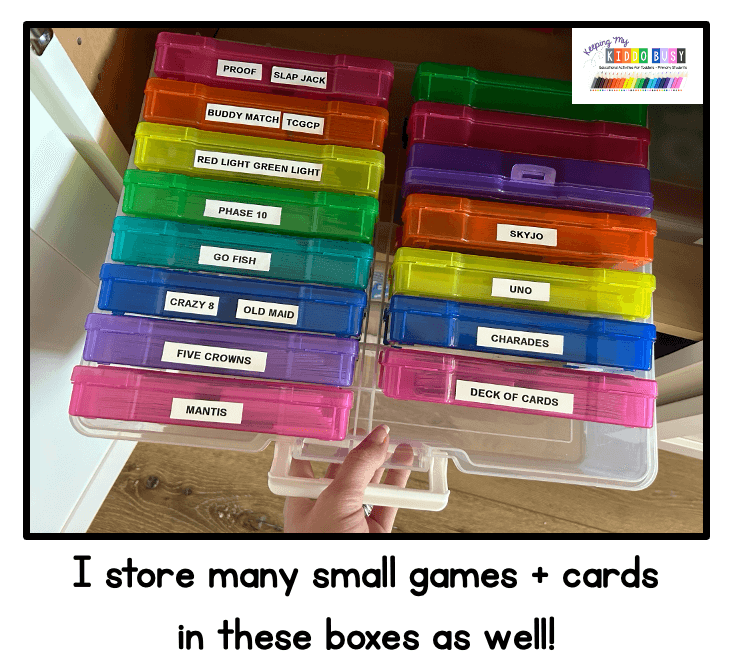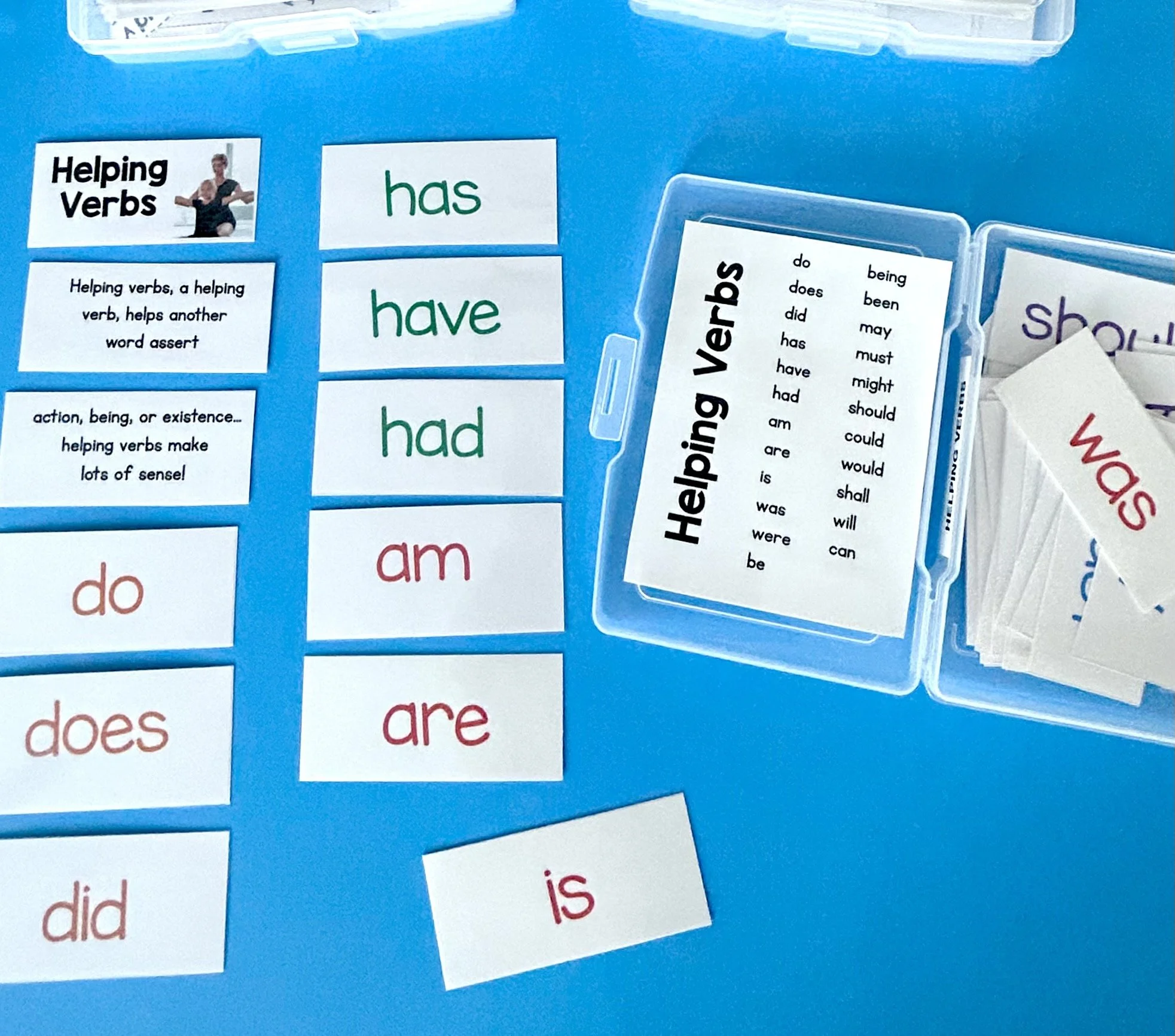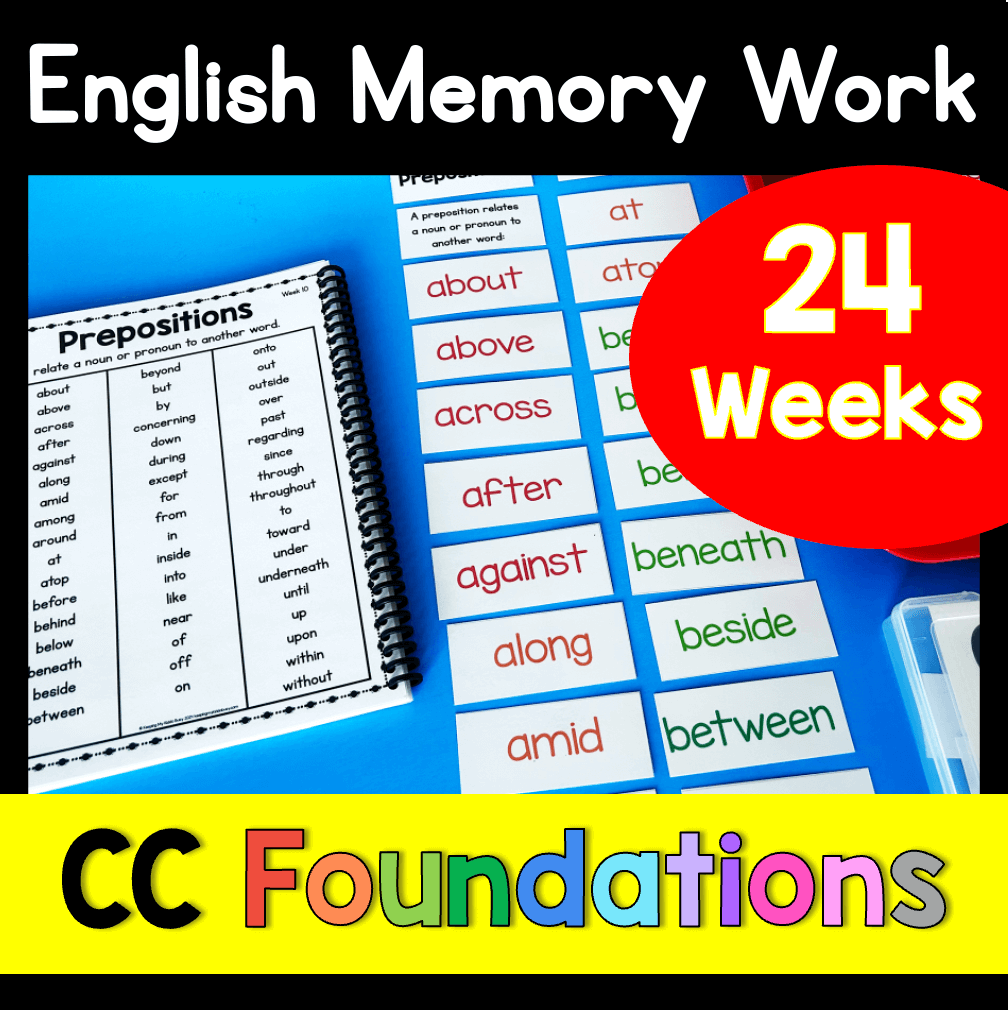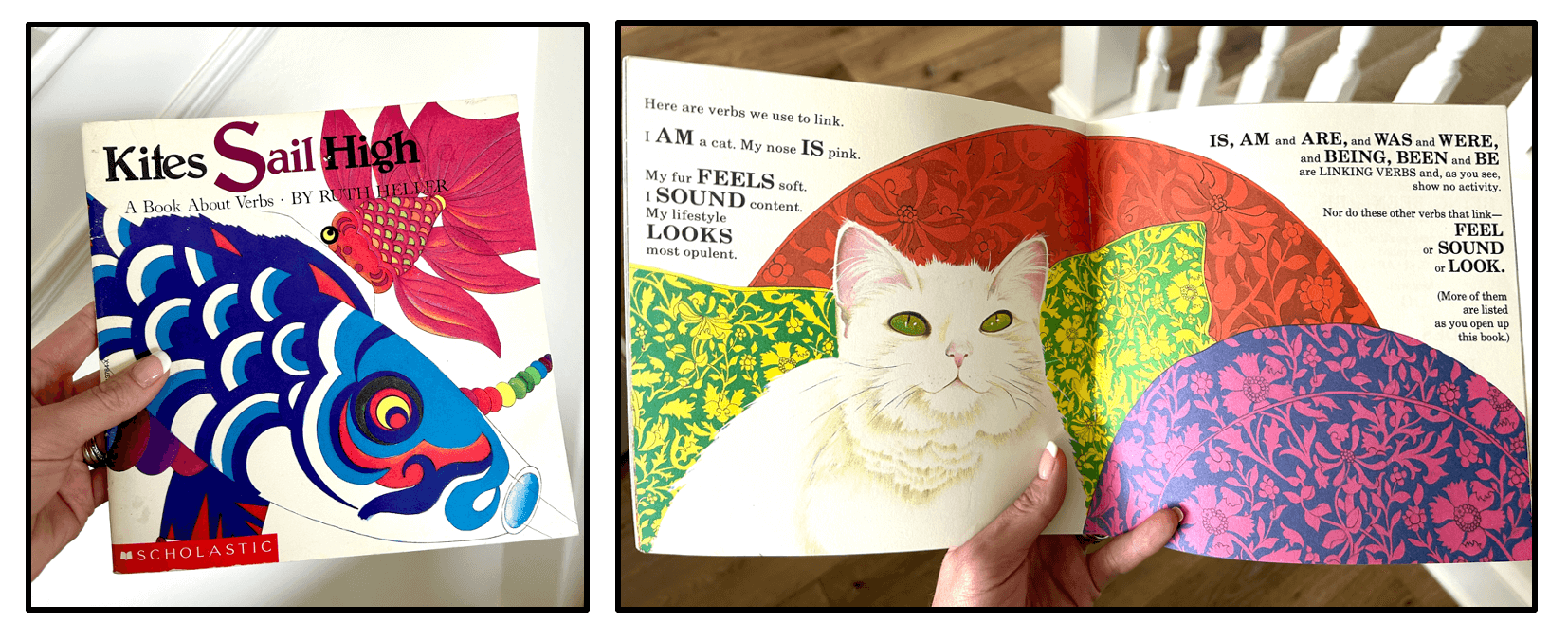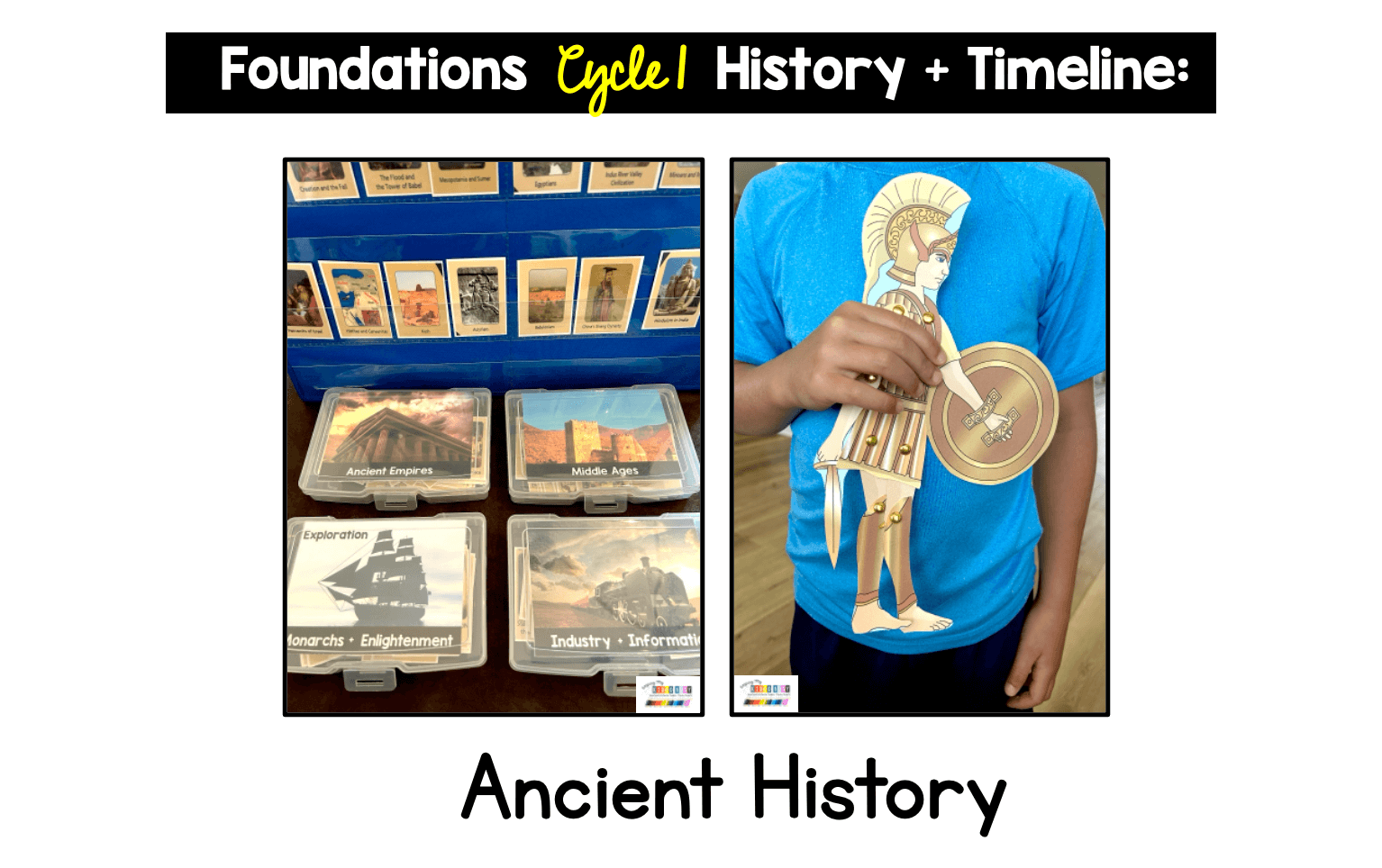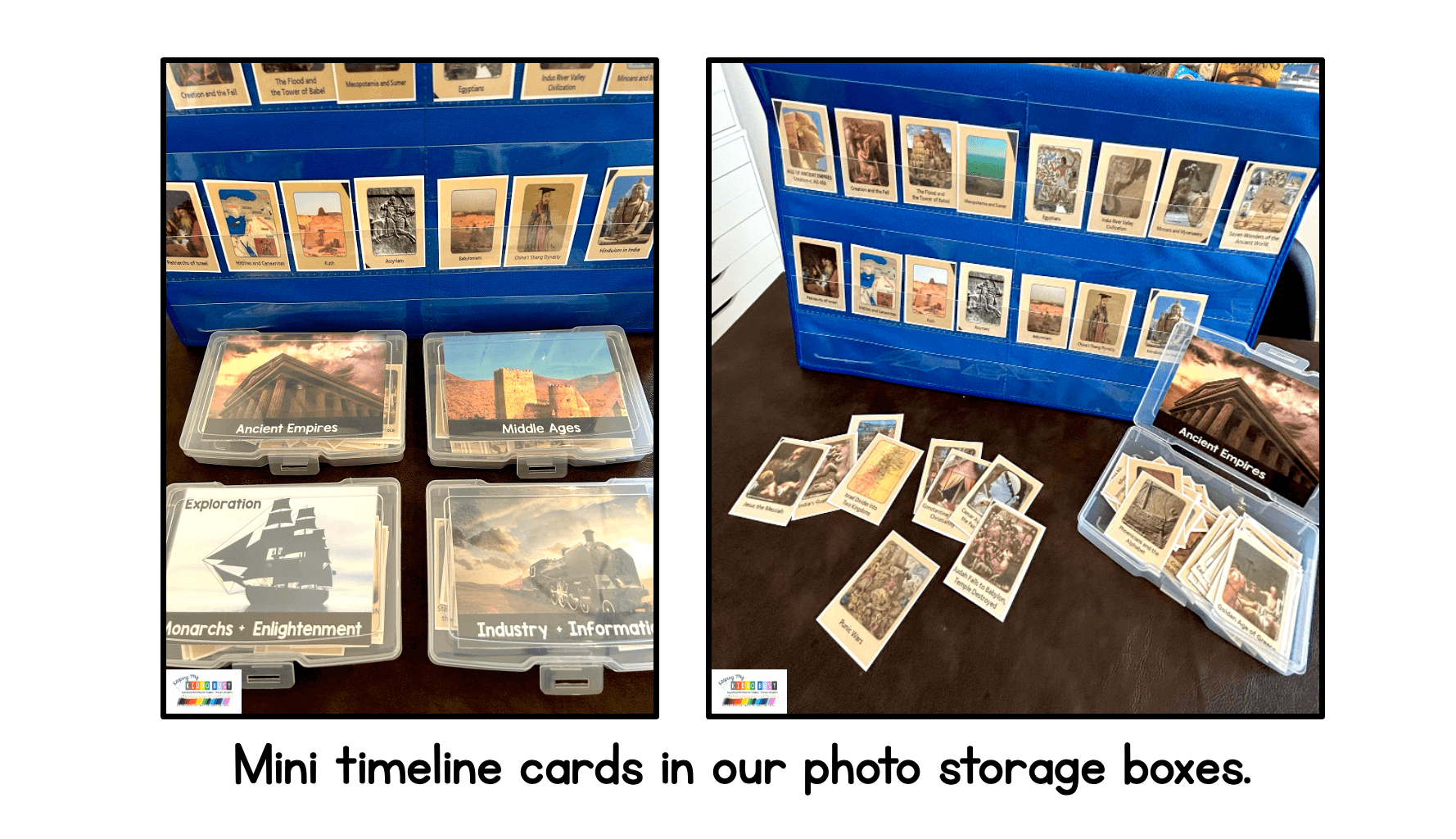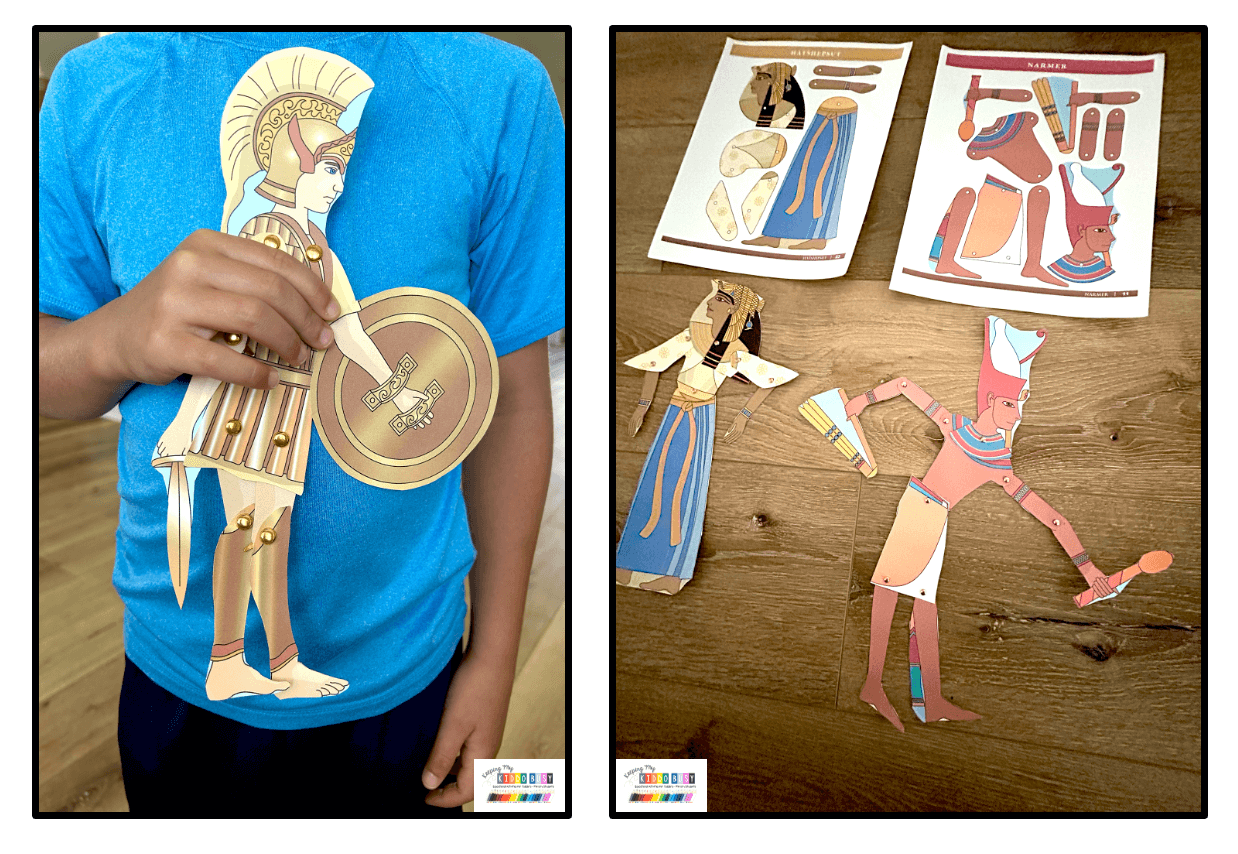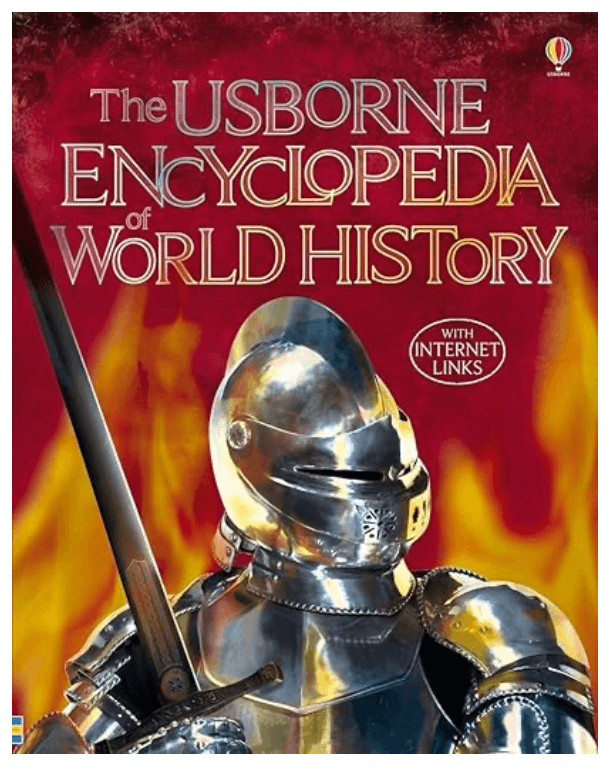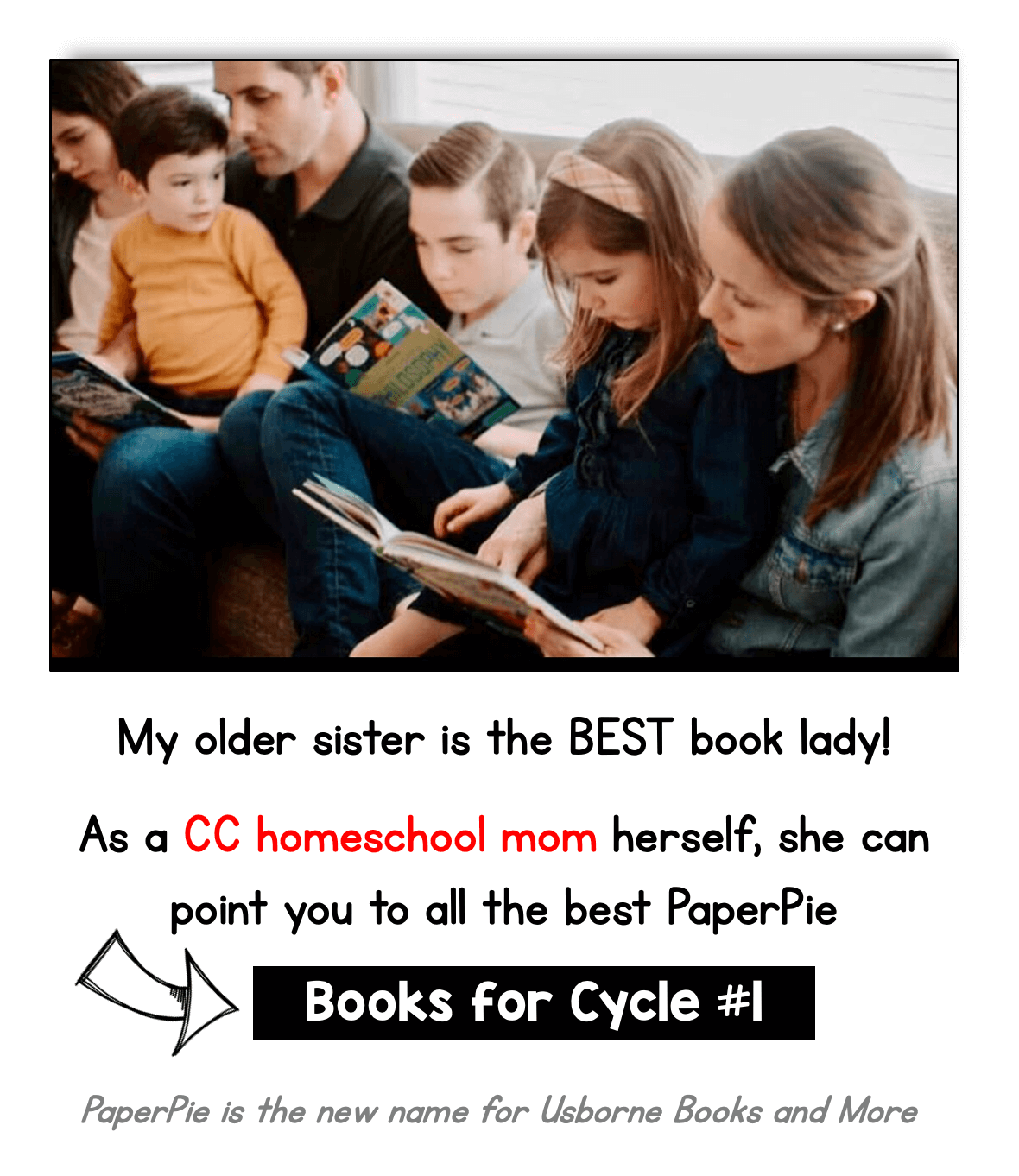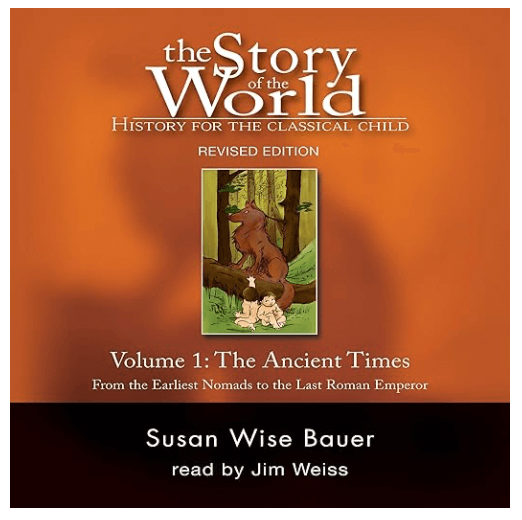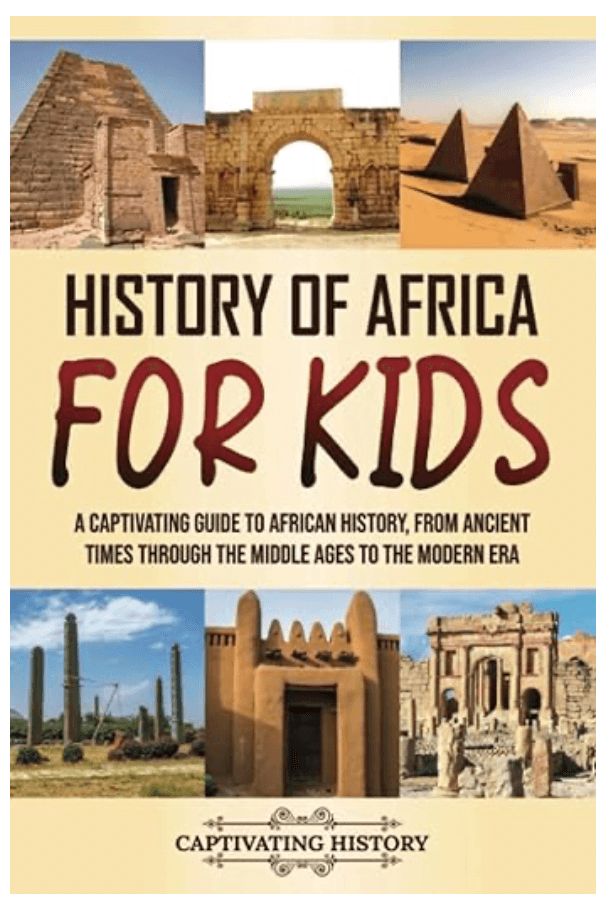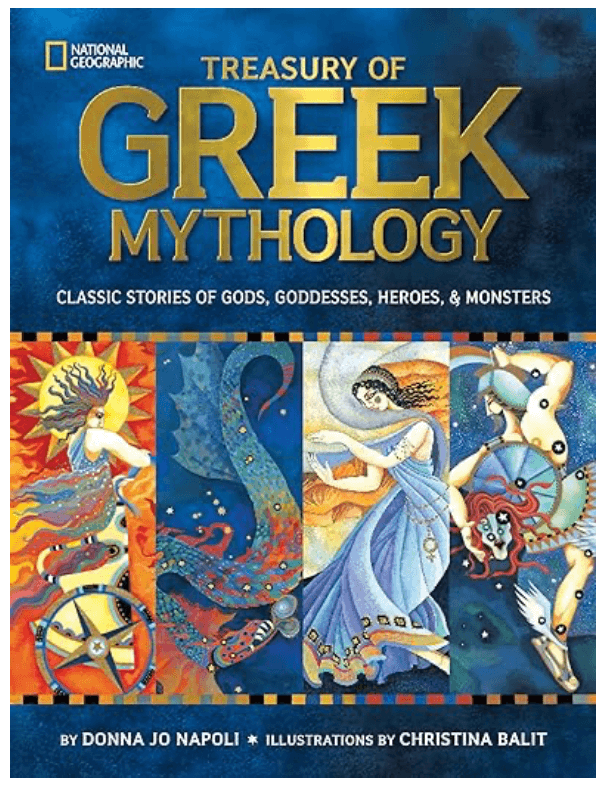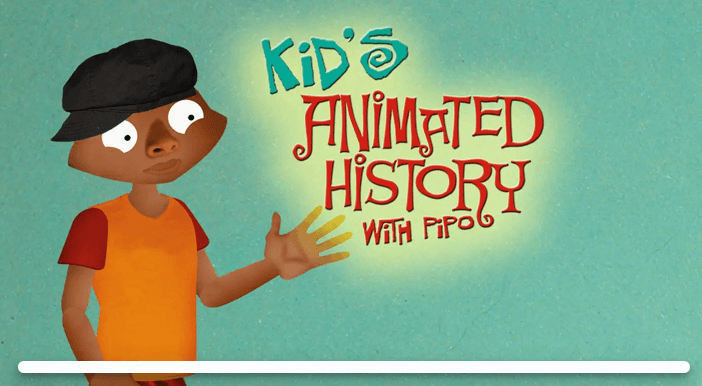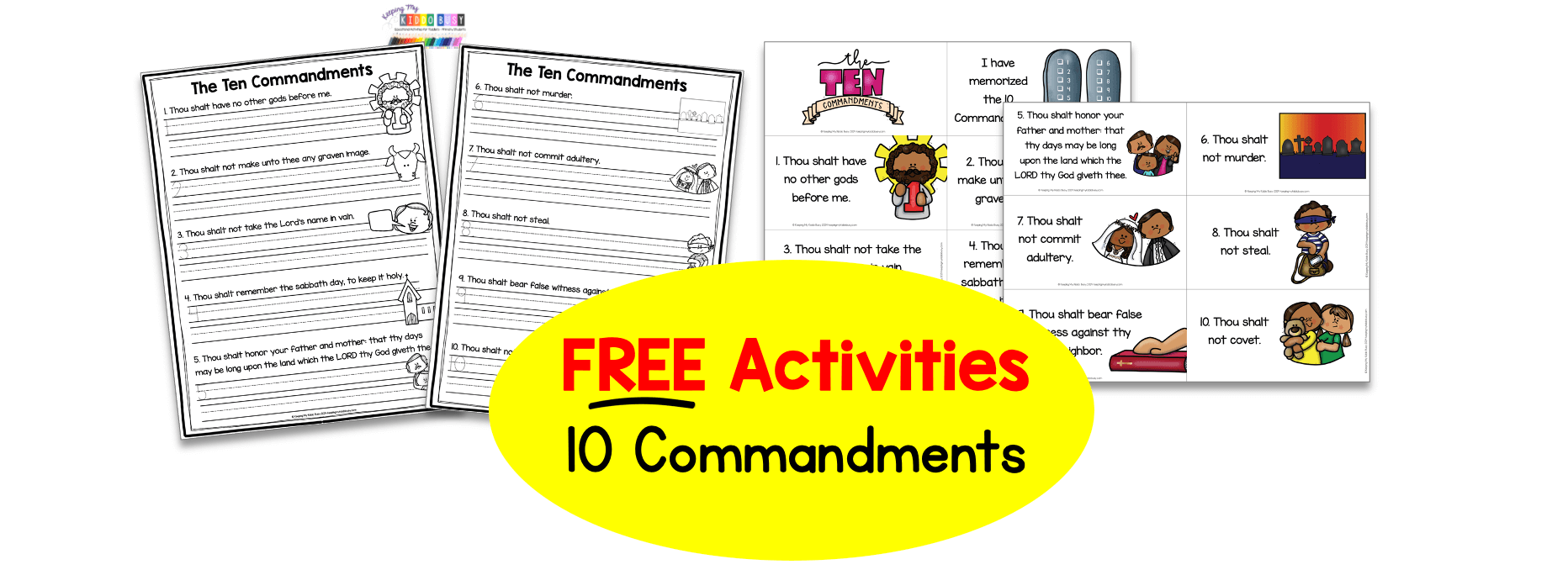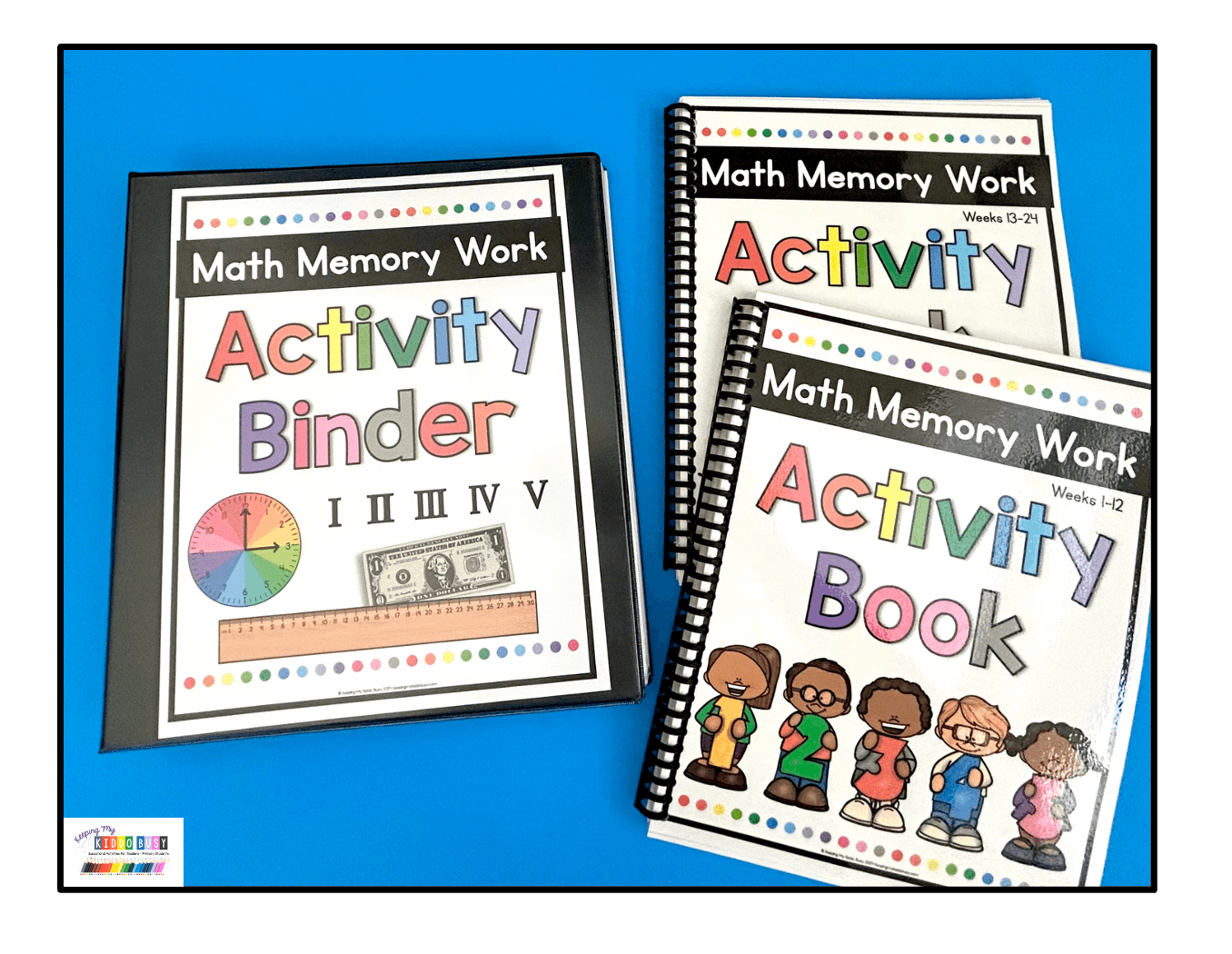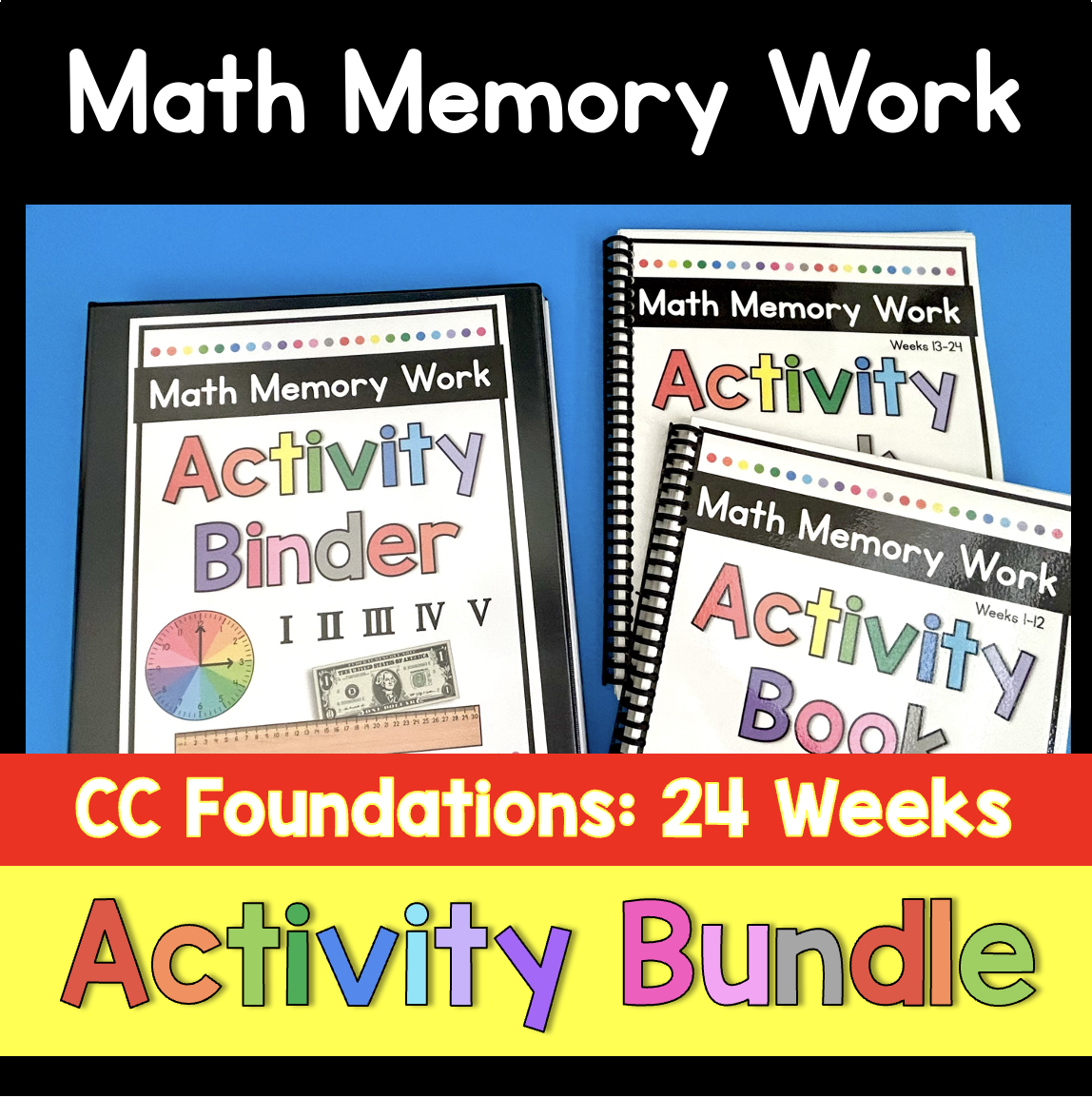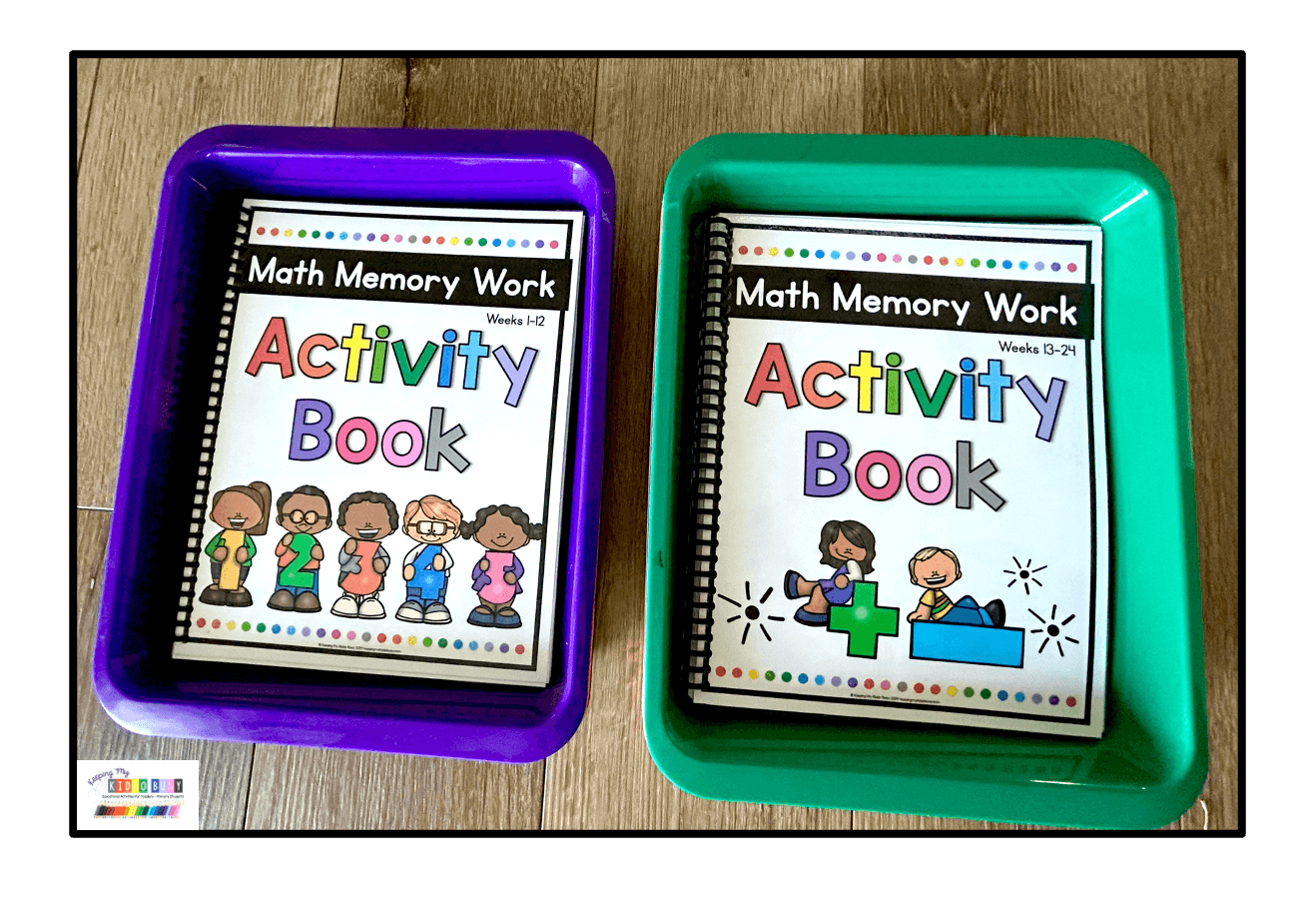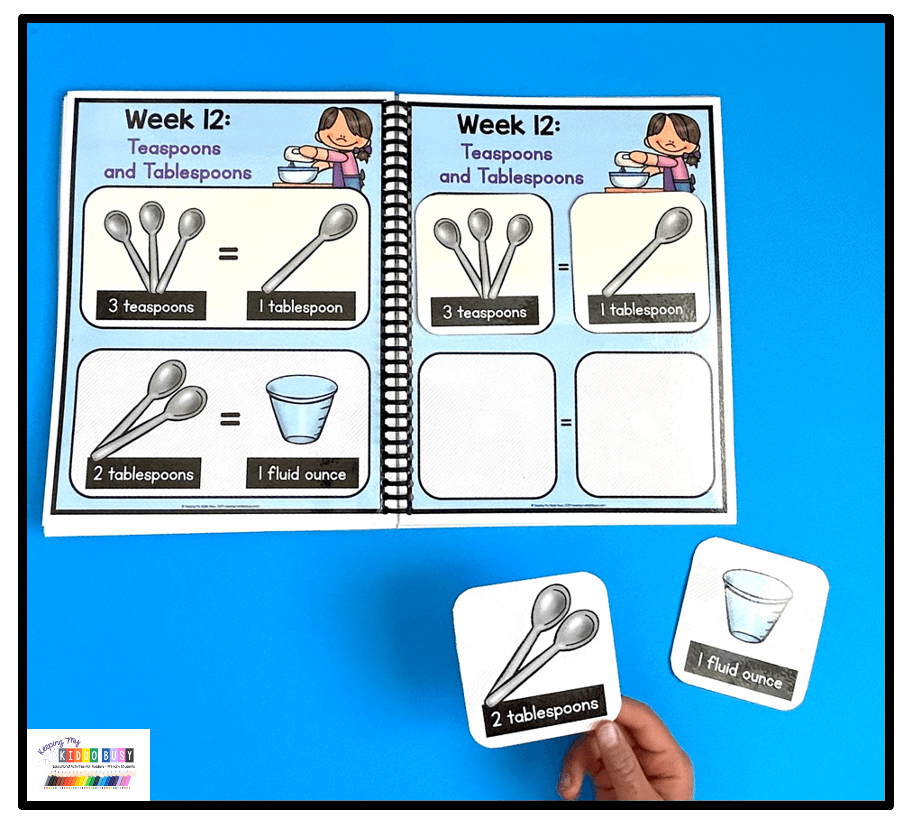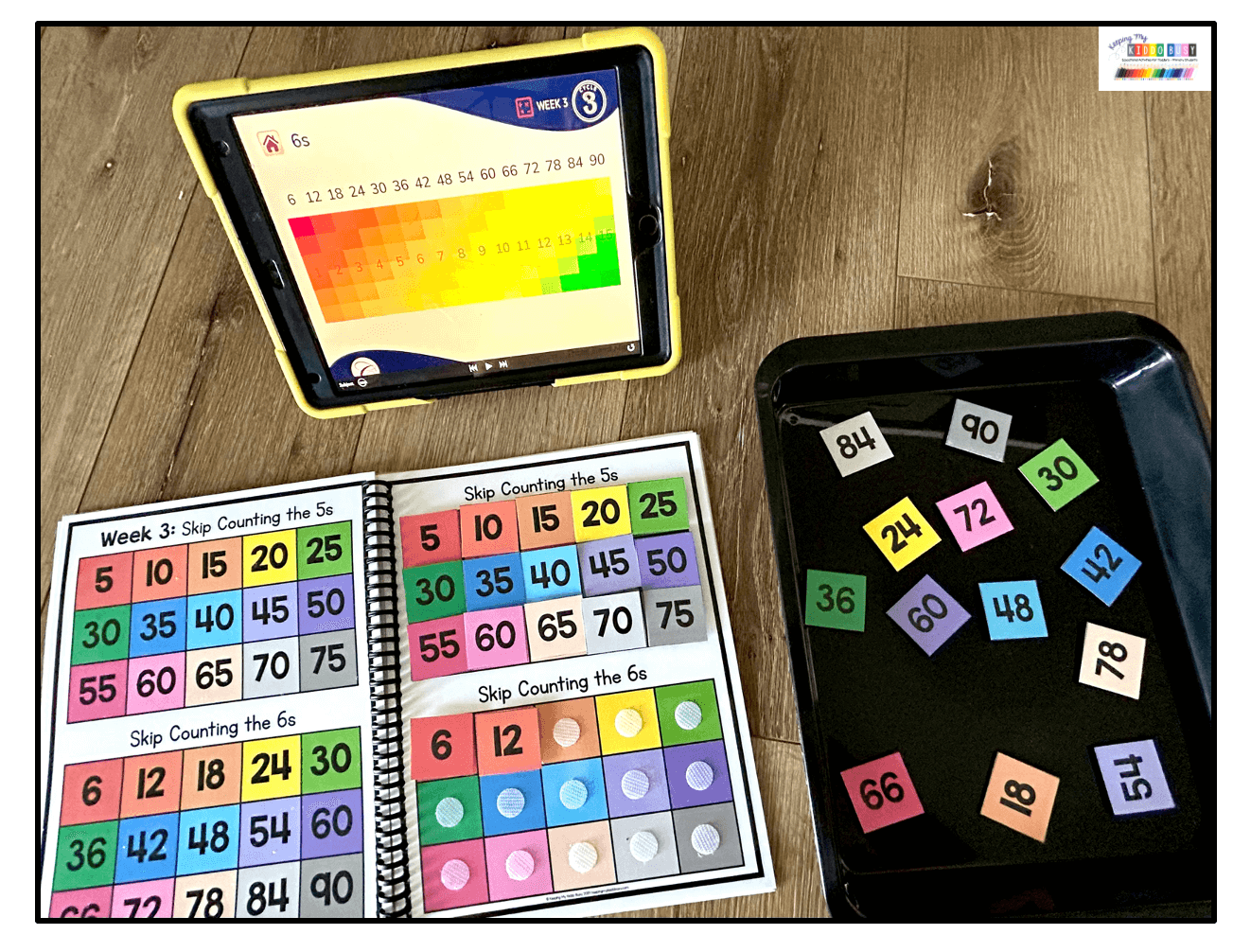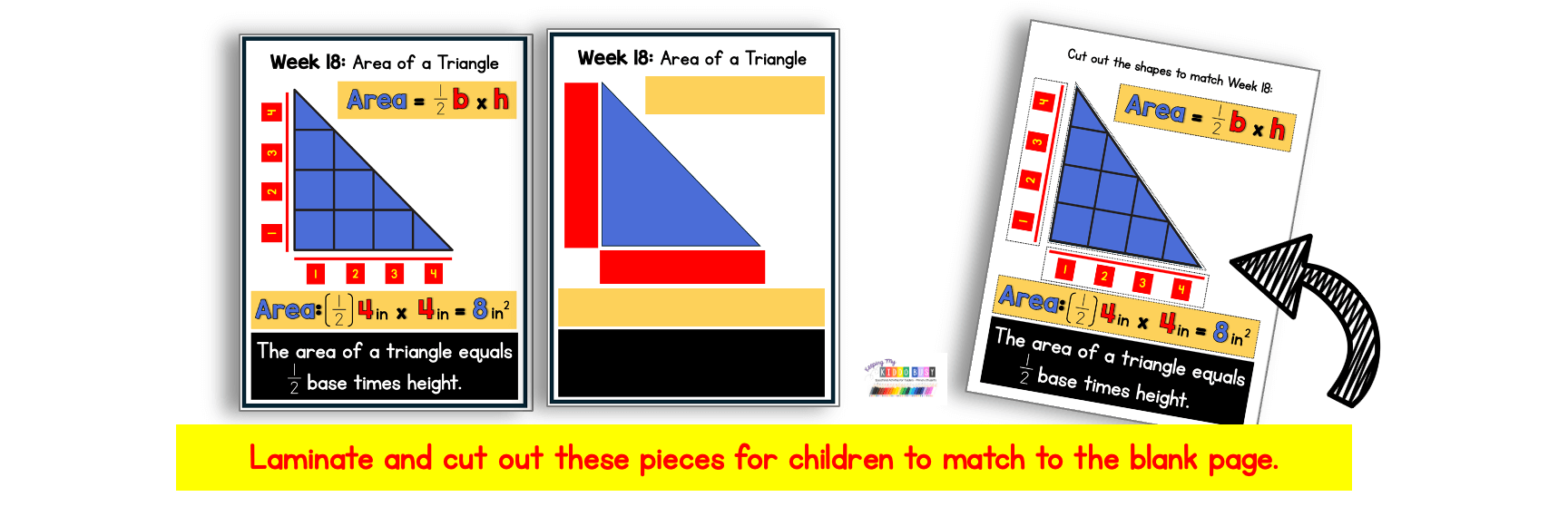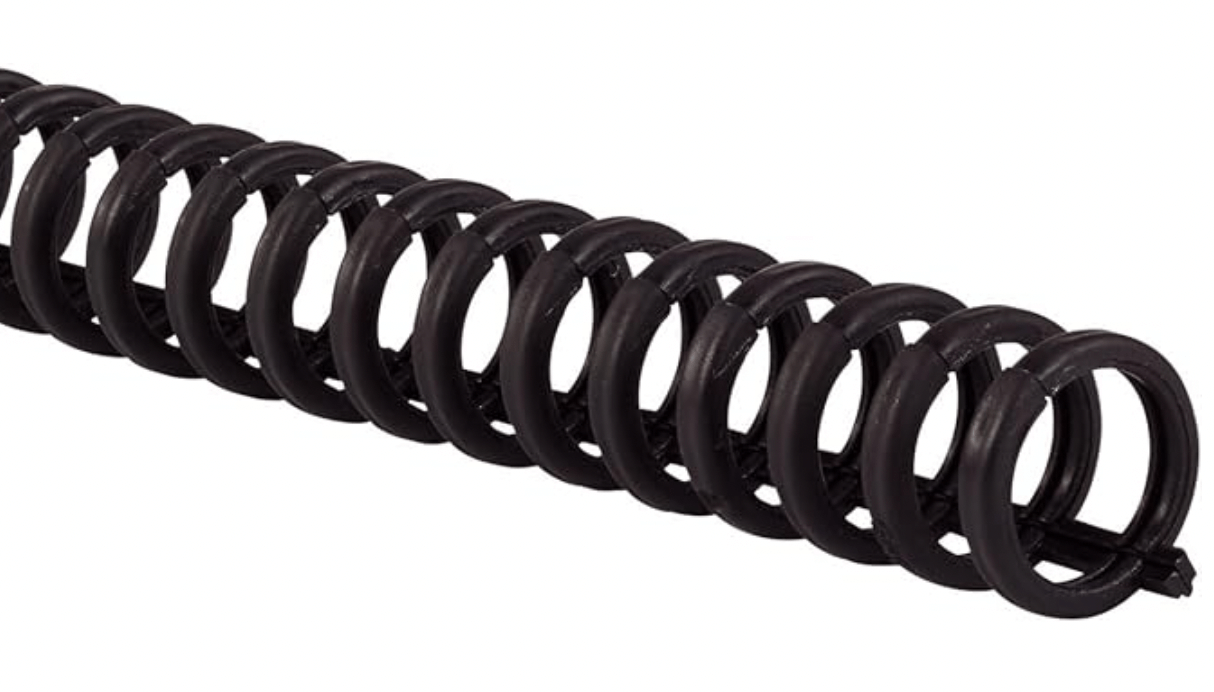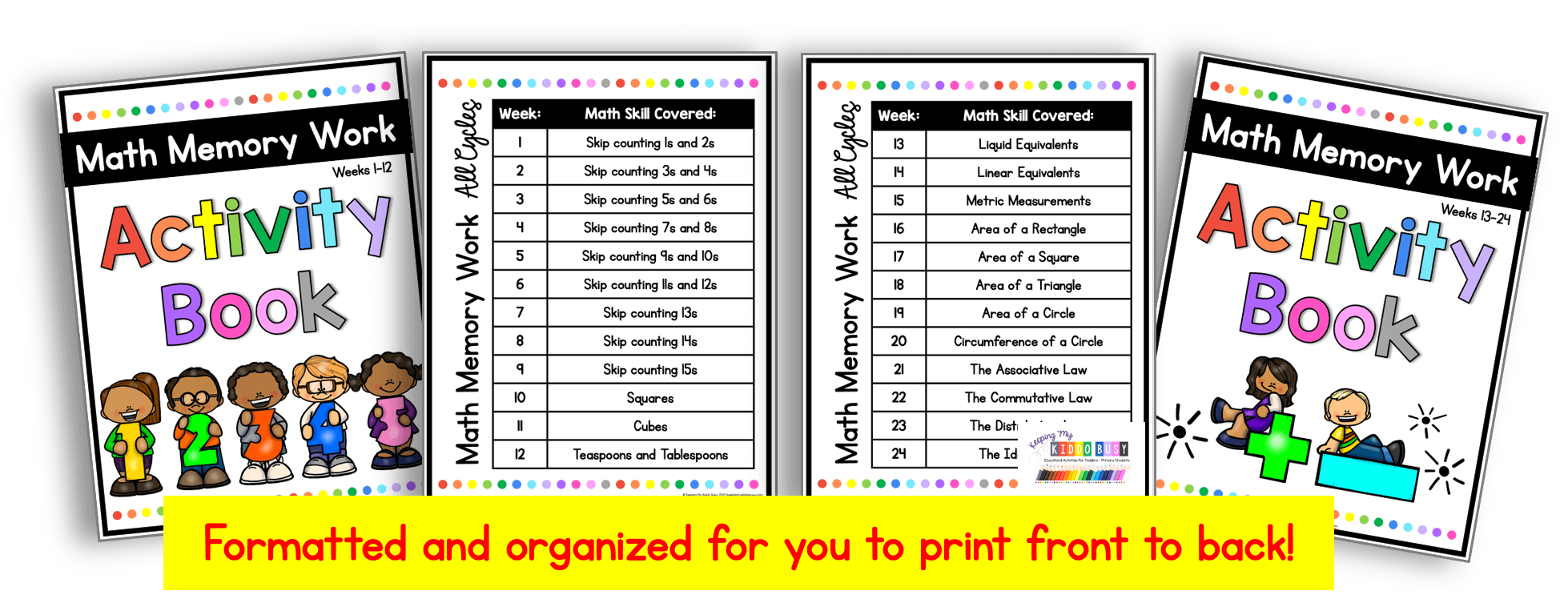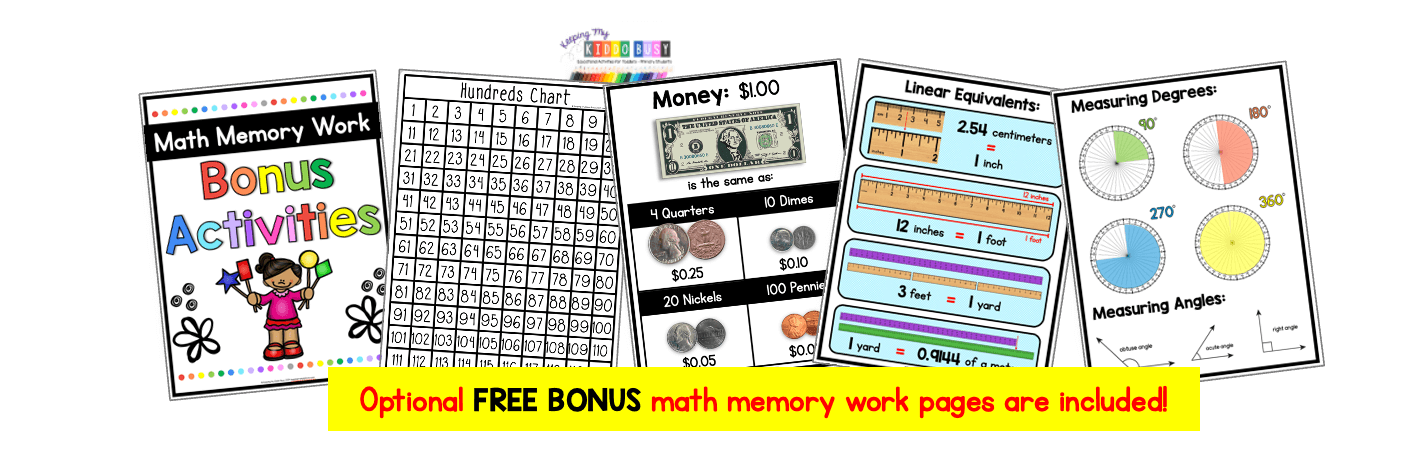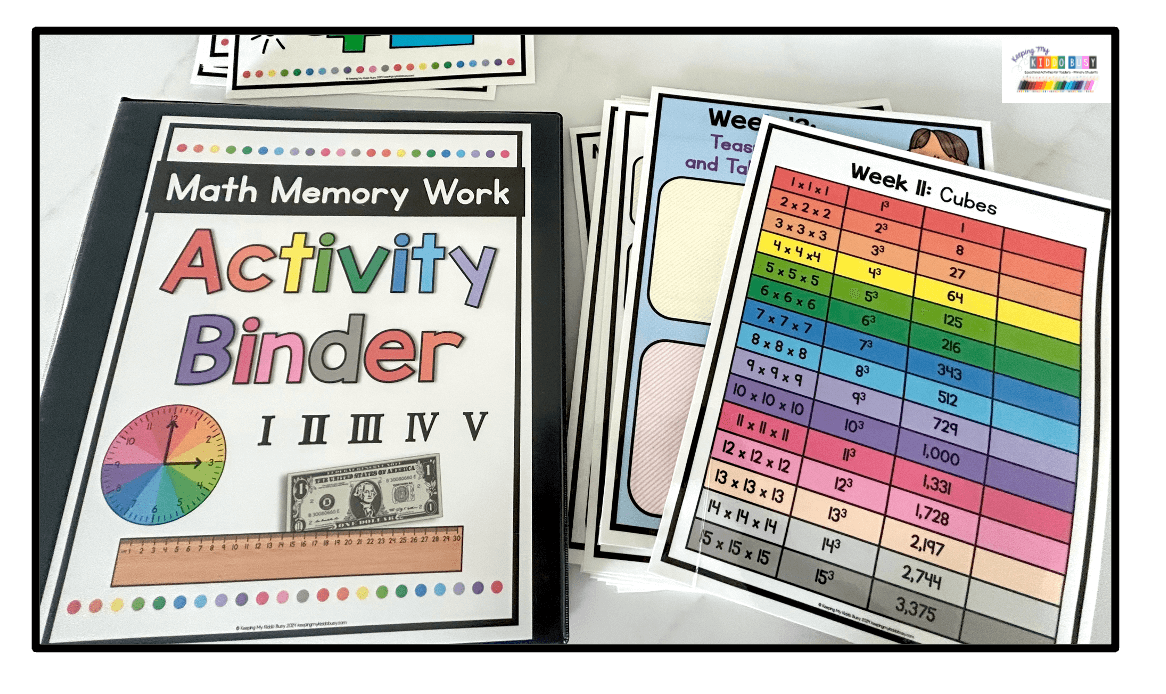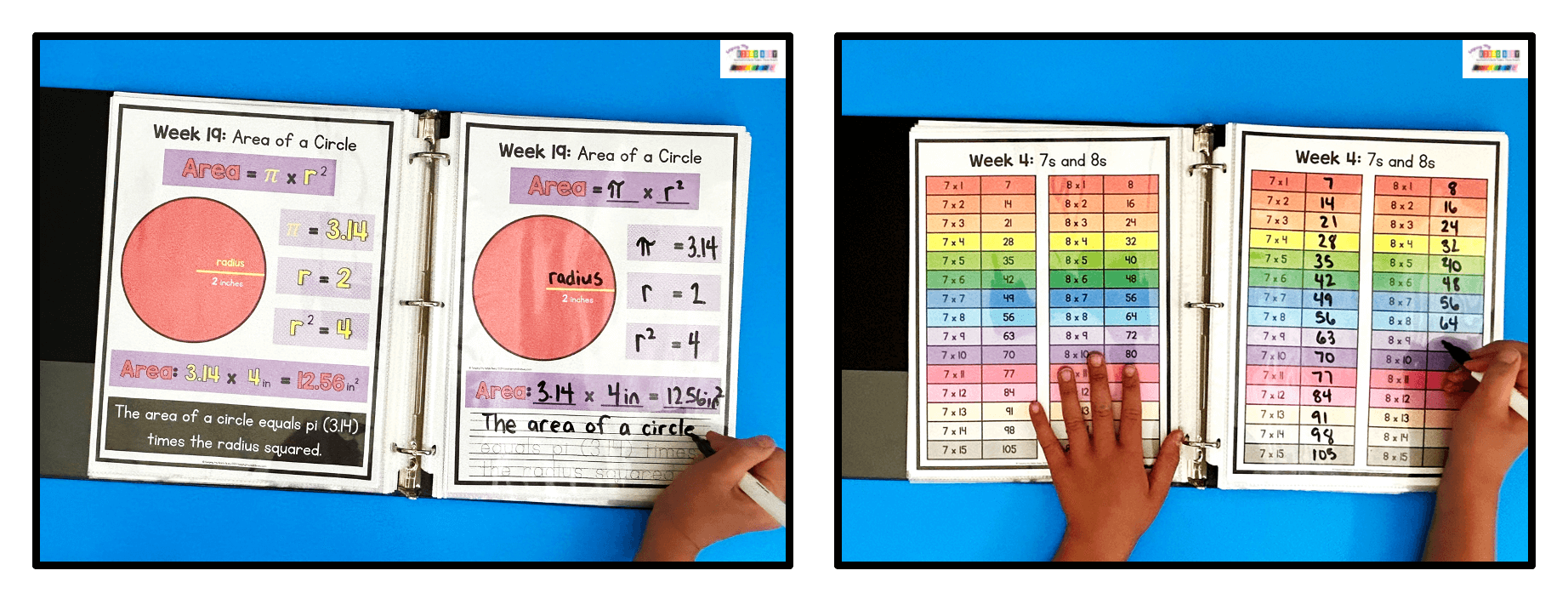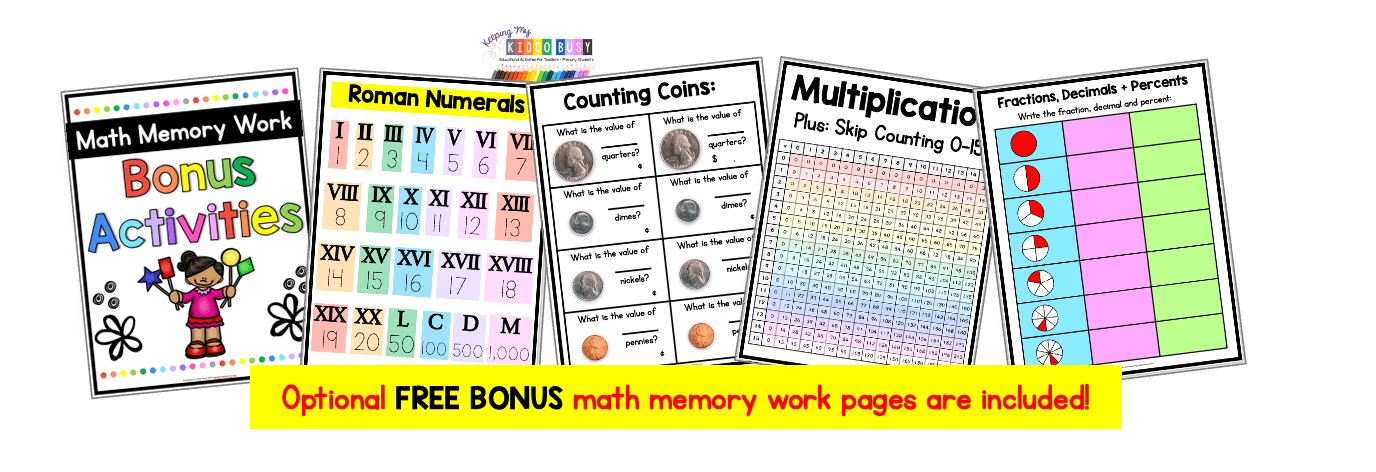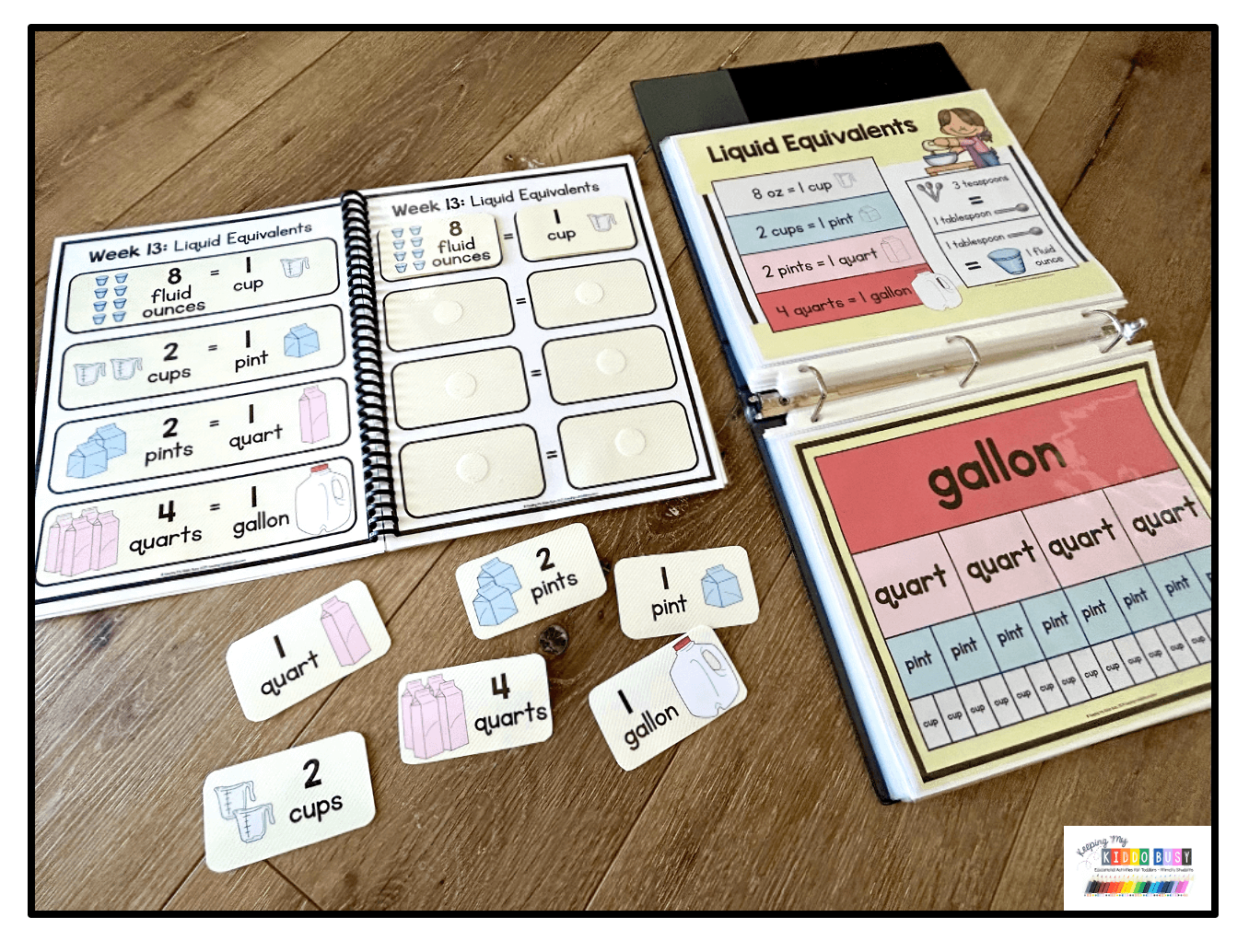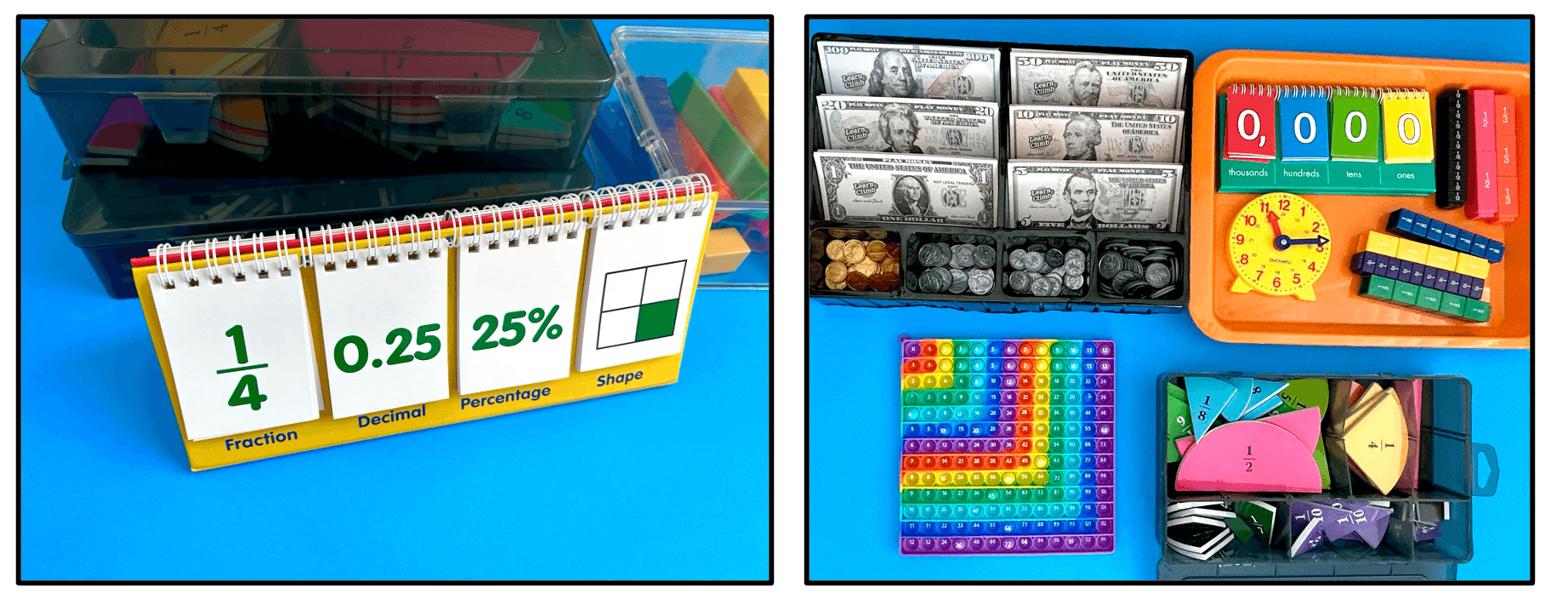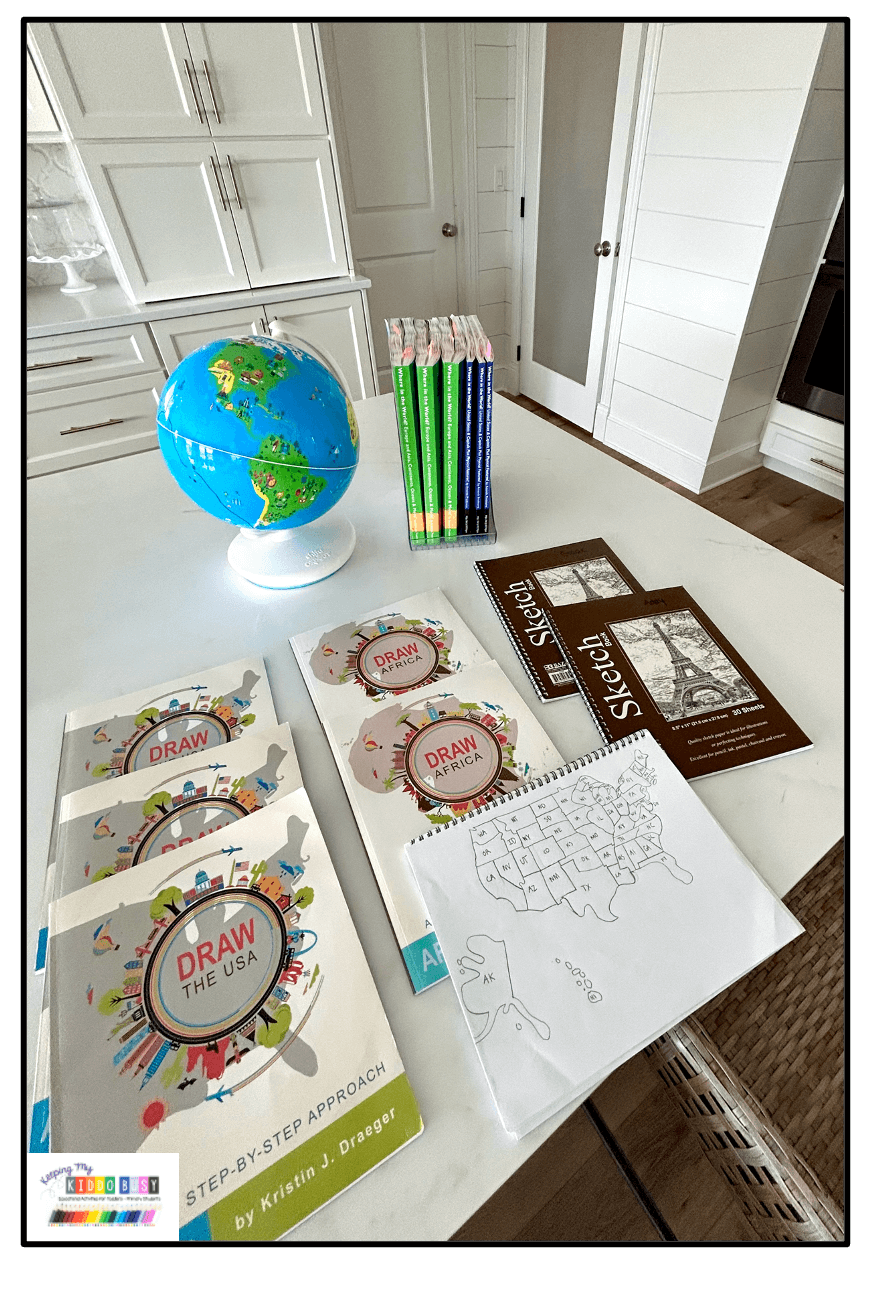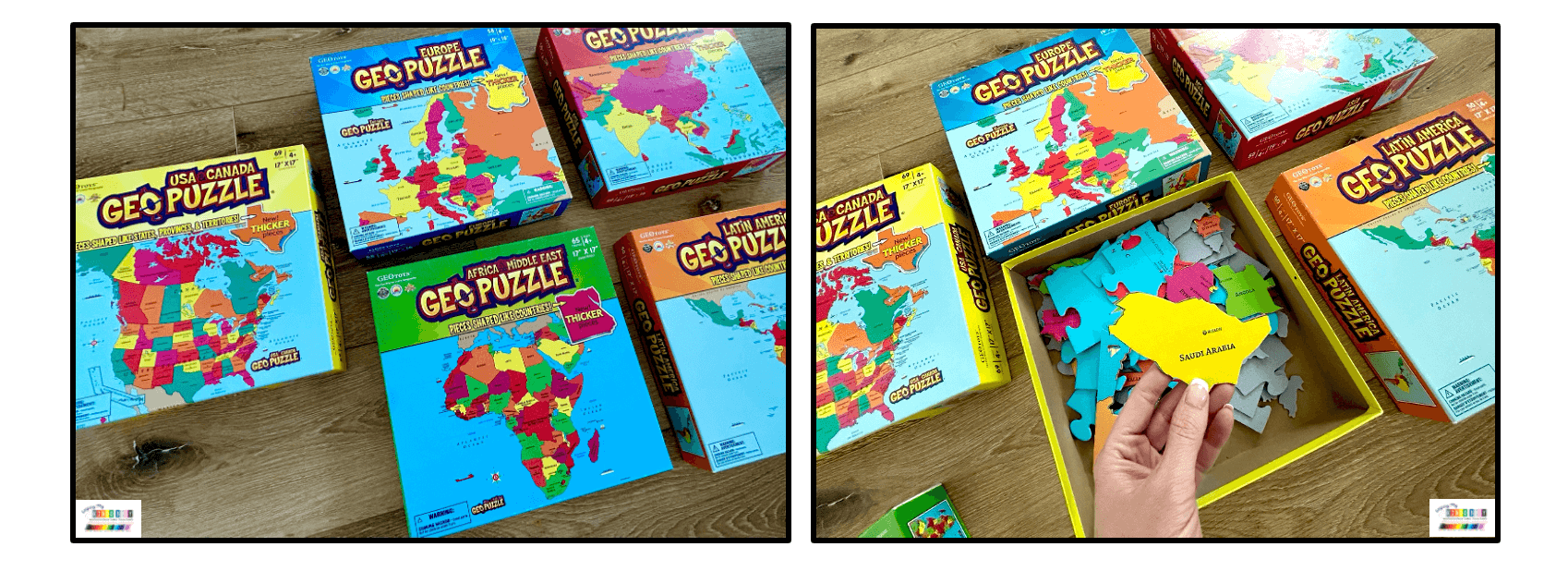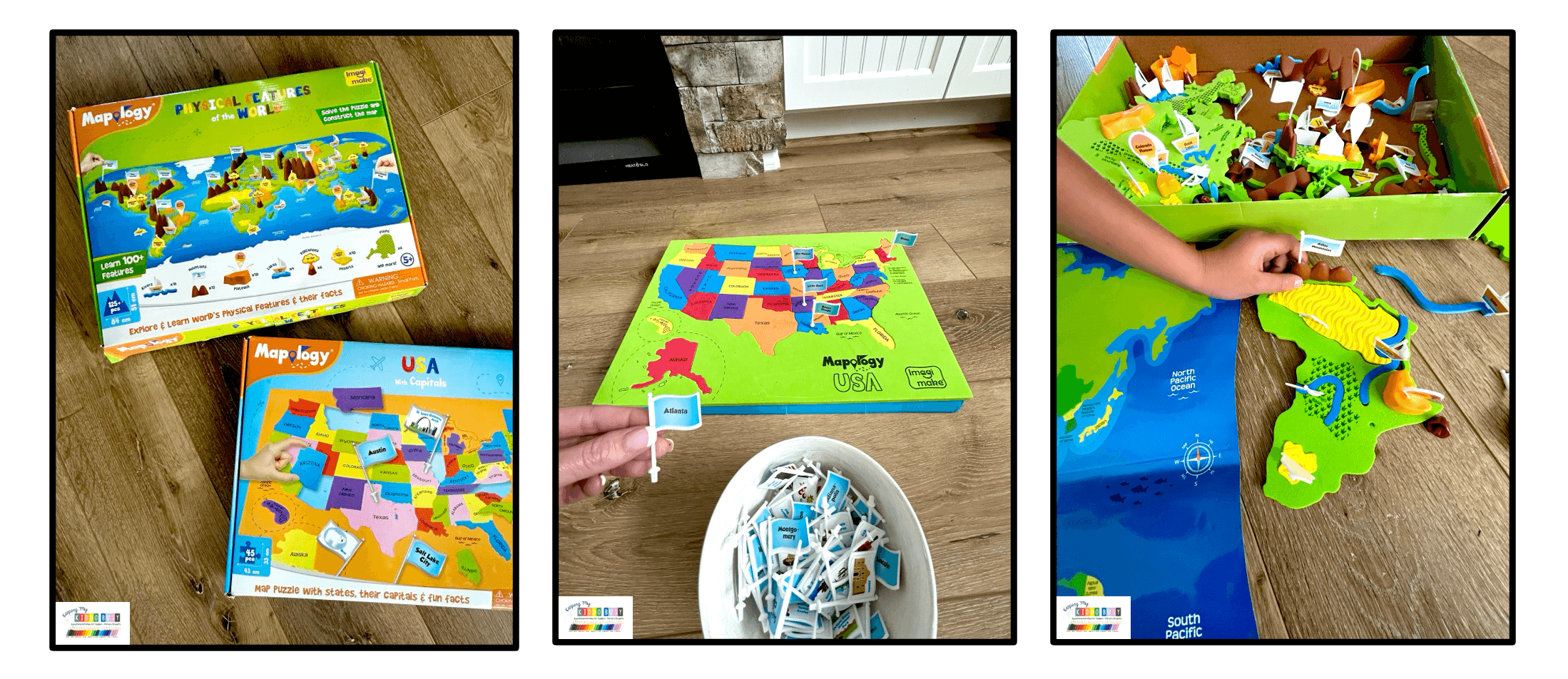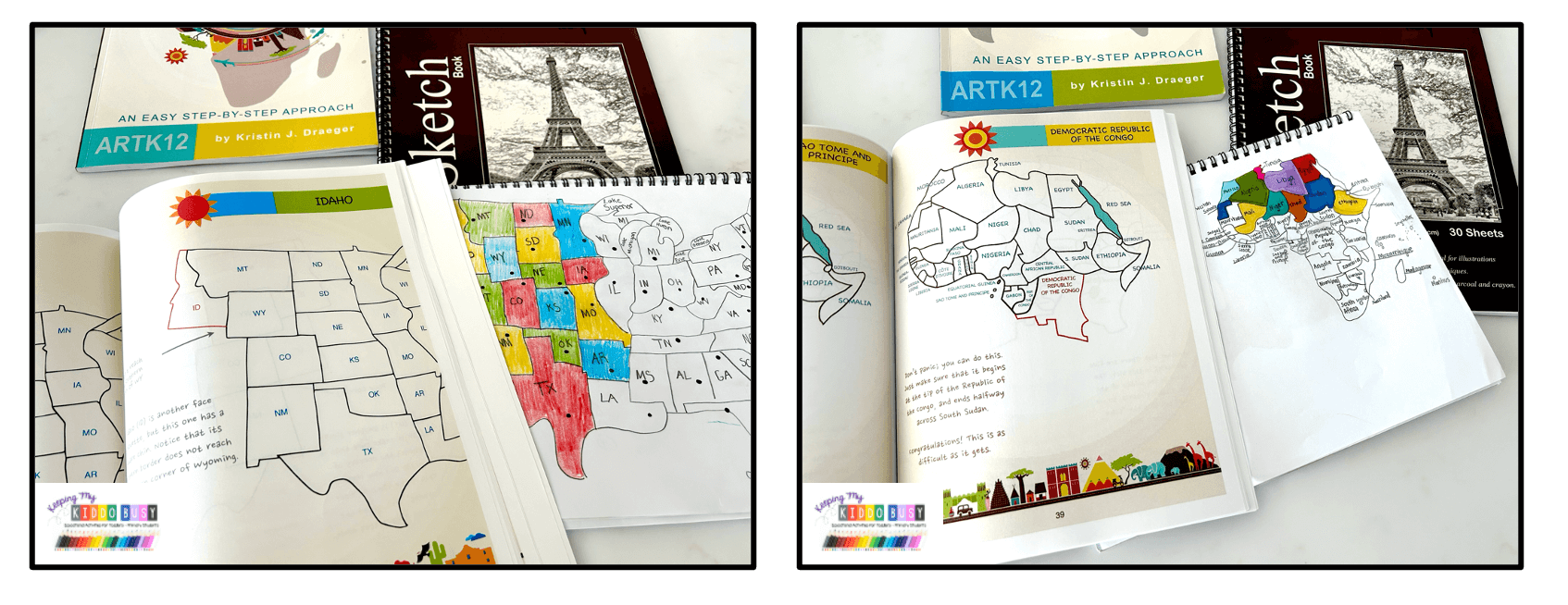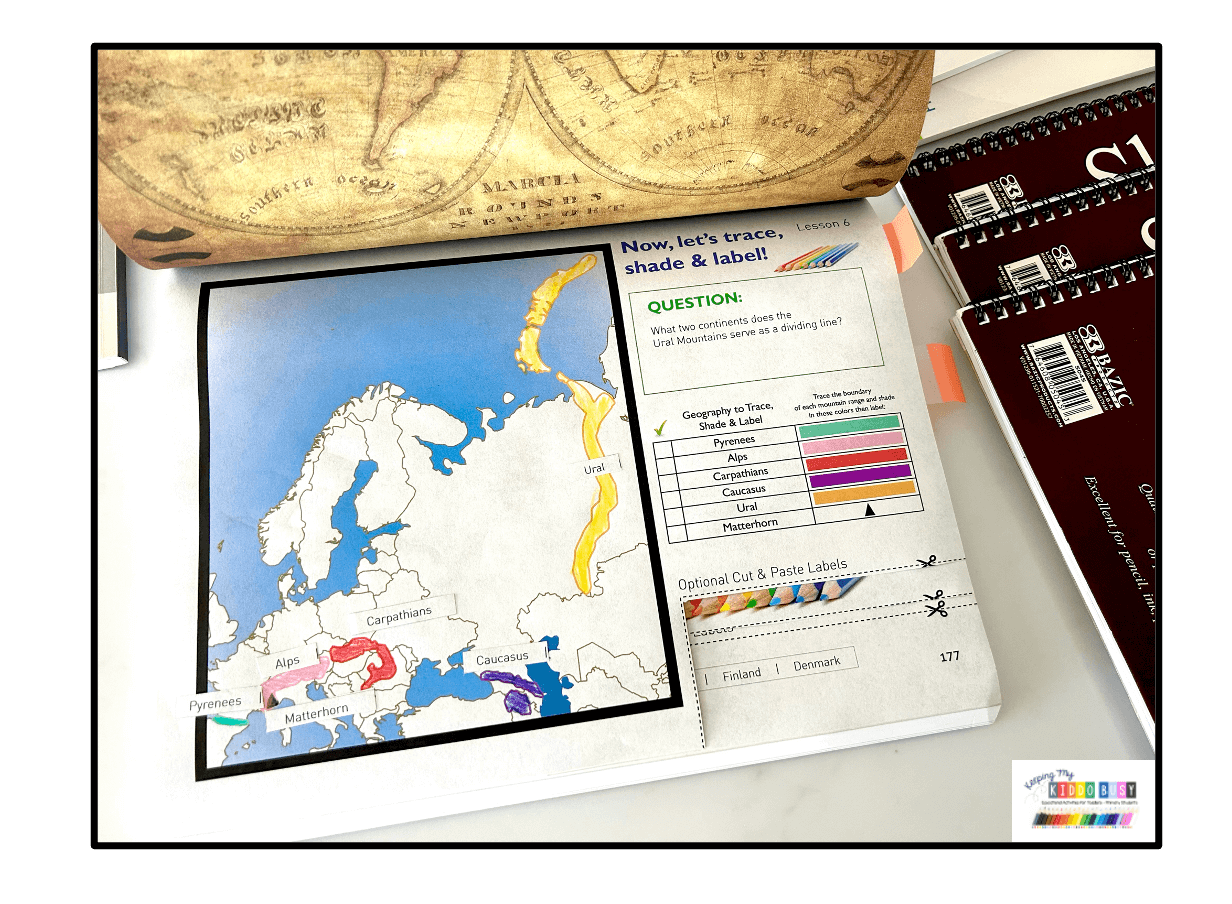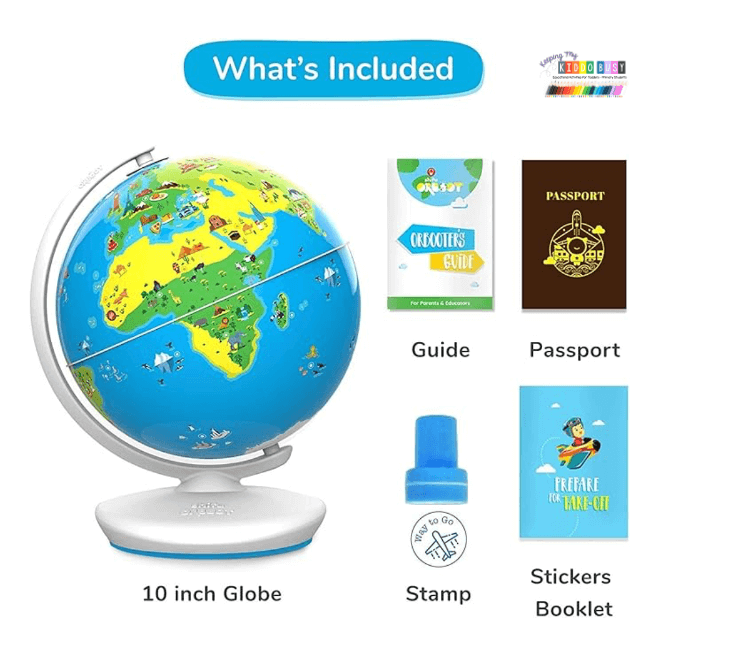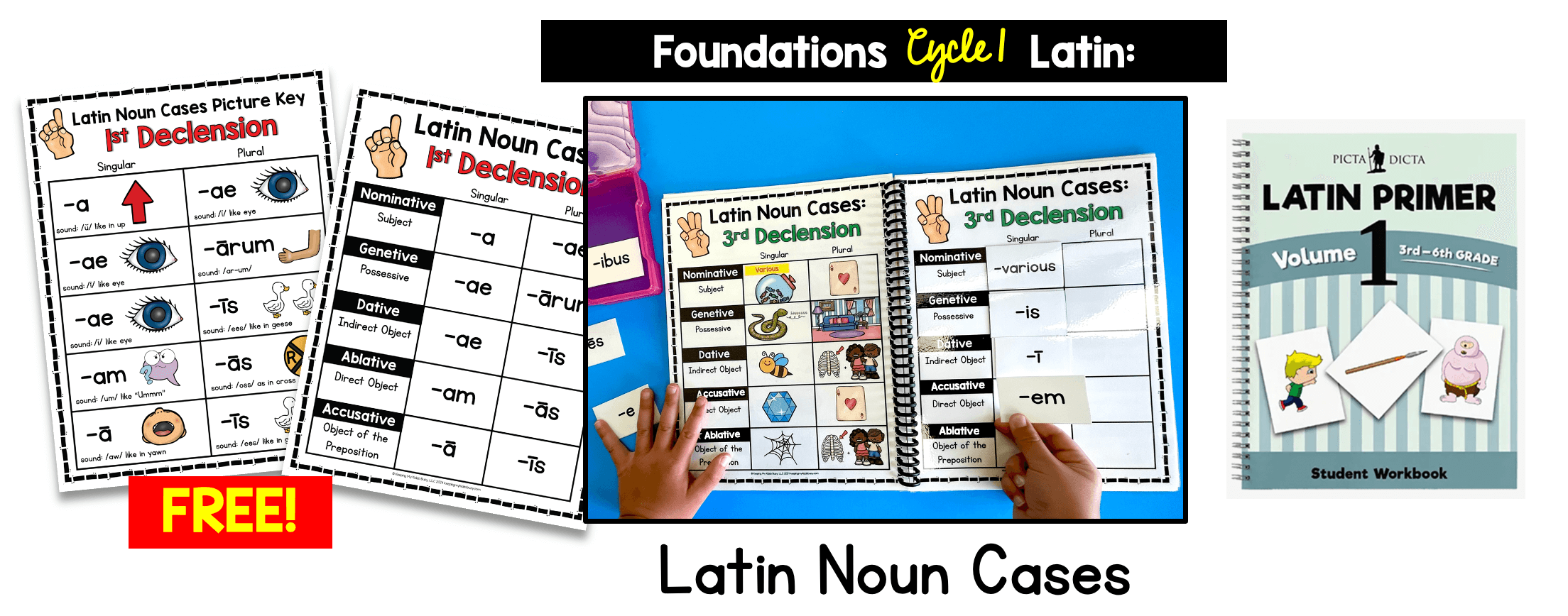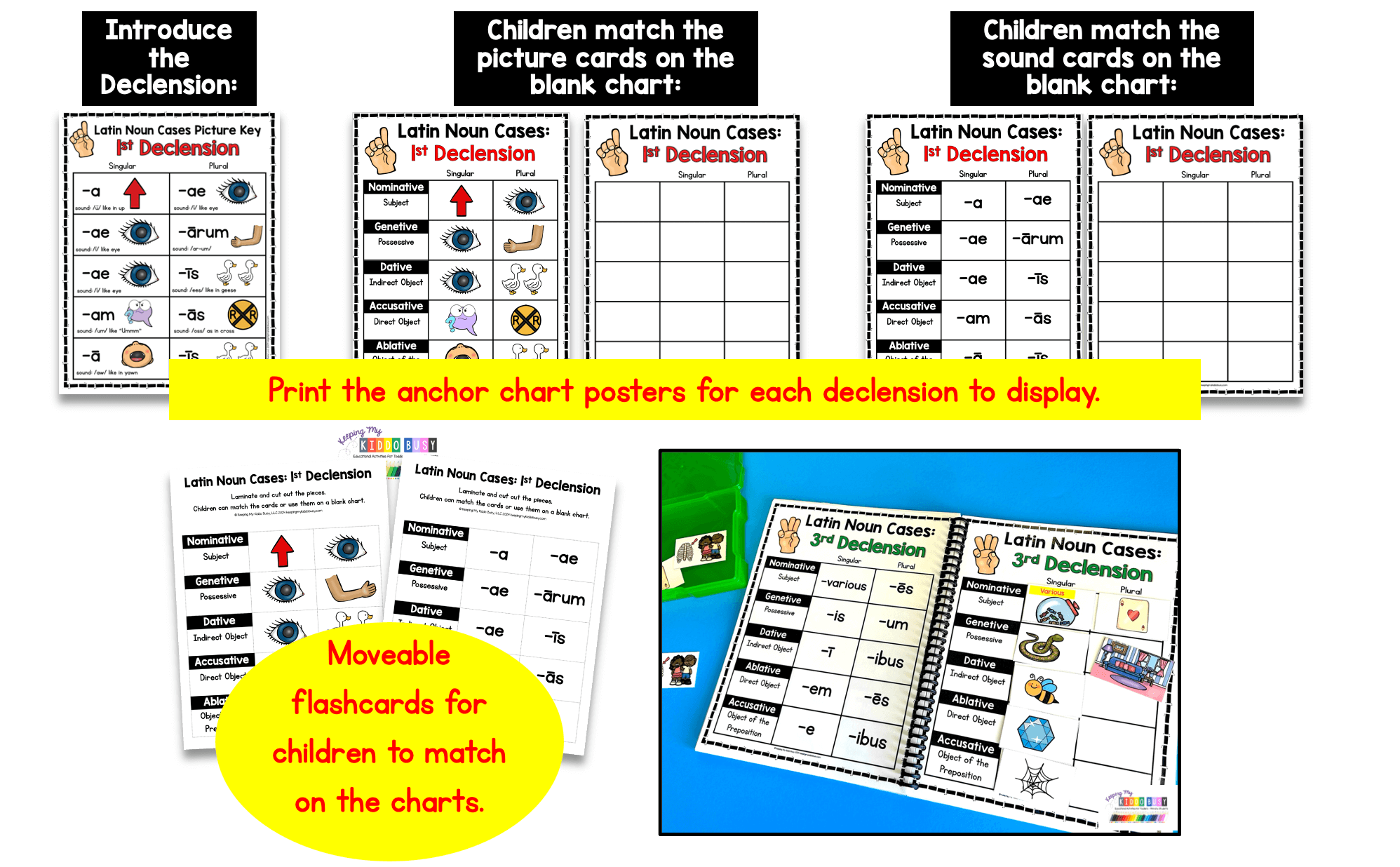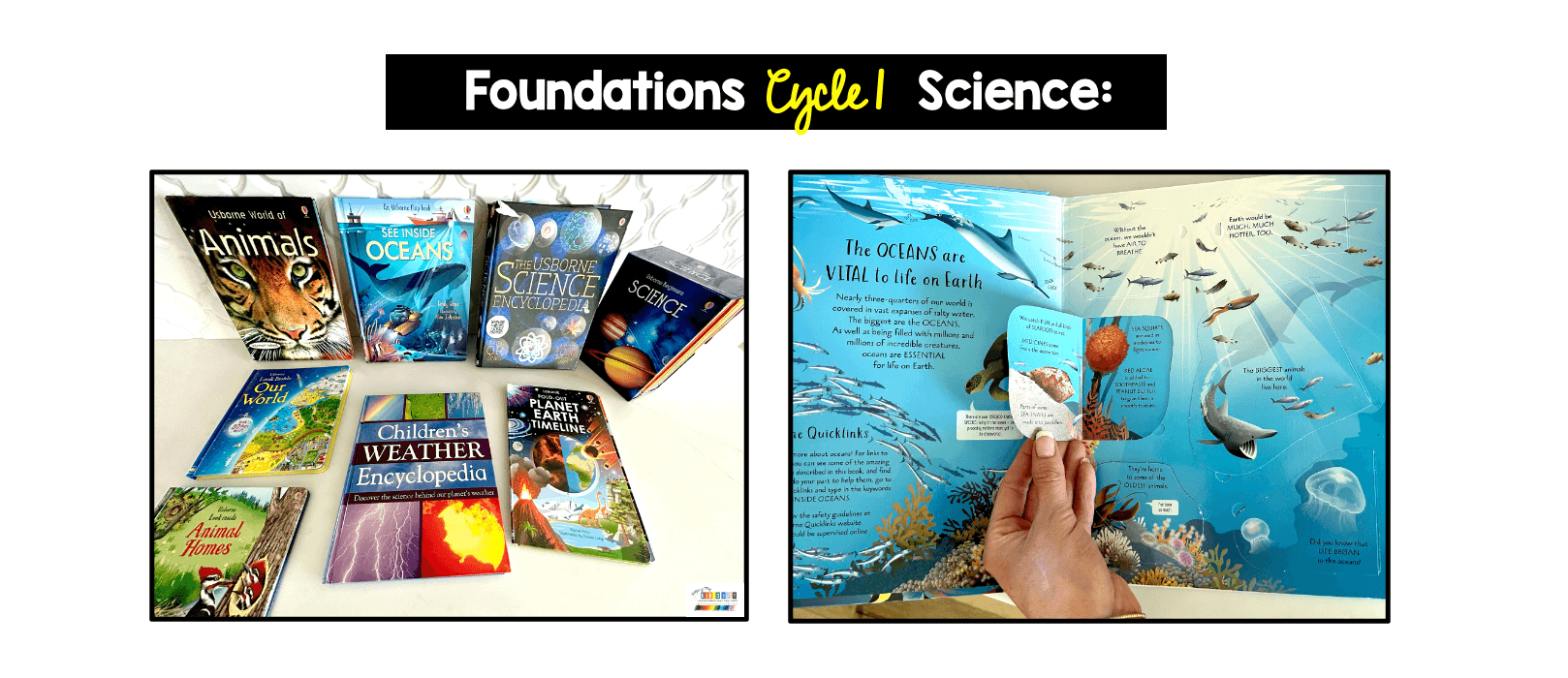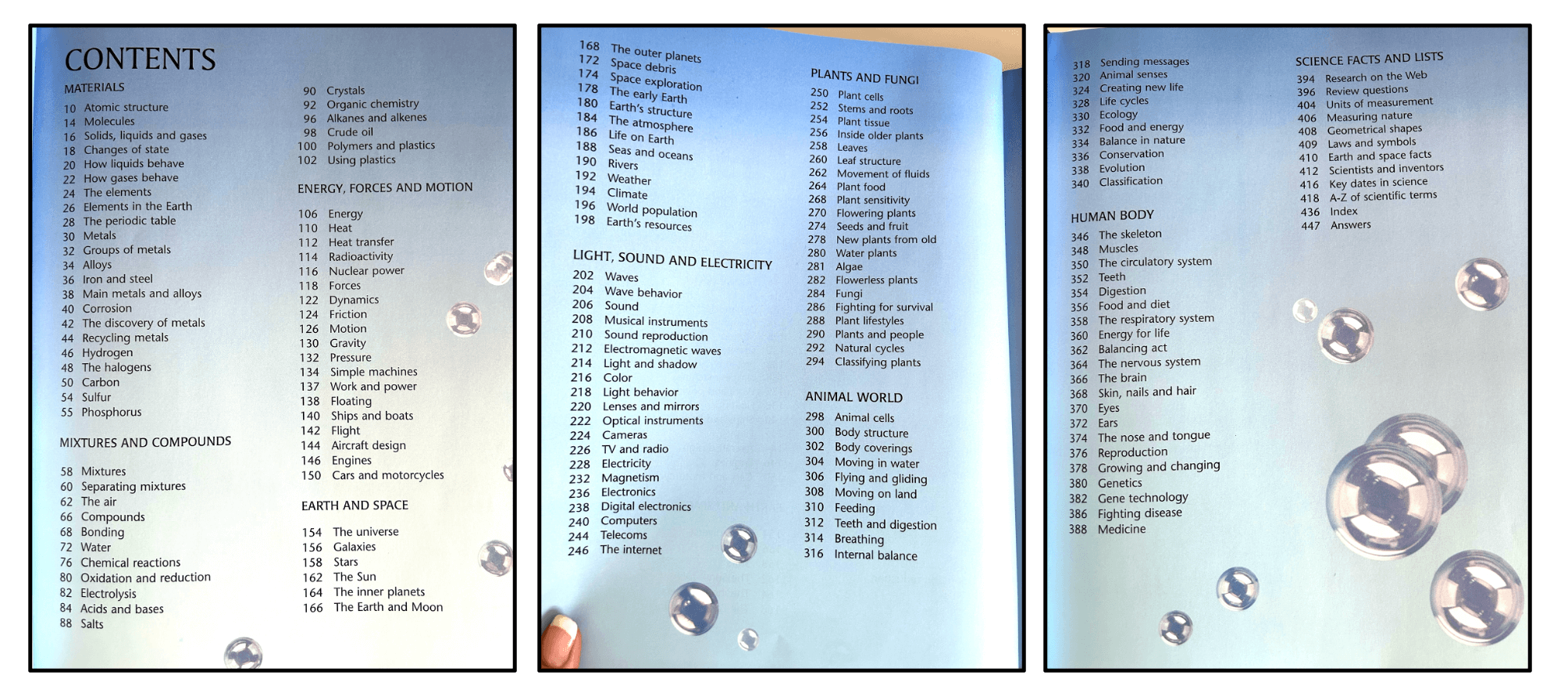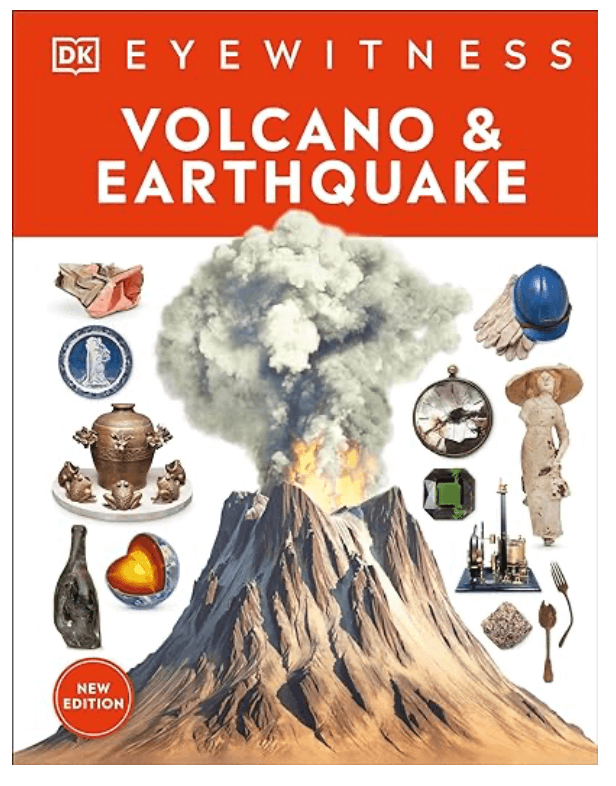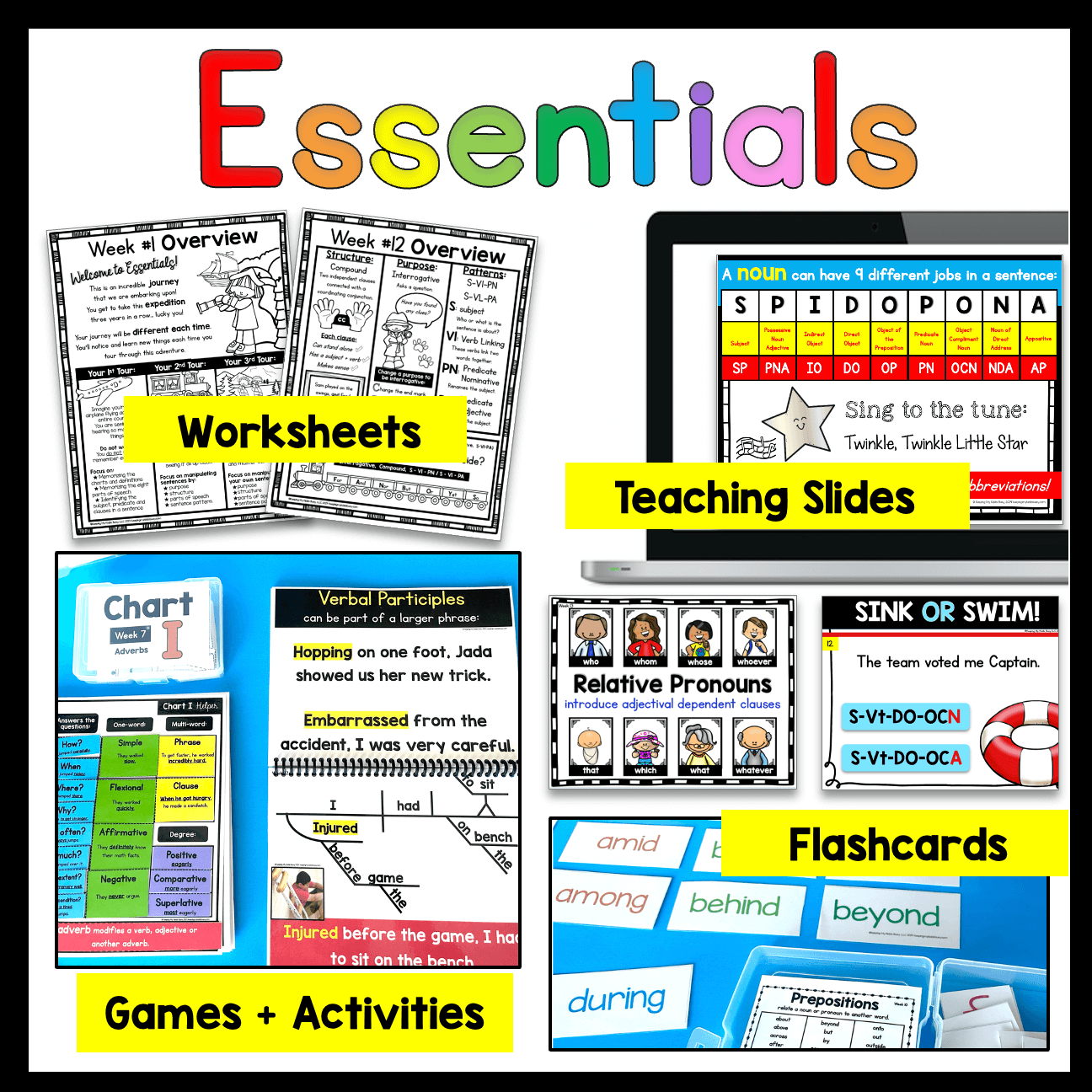Classical Conversations - Cycle 1 Ideas and Resources
Are you teaching Cycle One this year Classical Conversations?
In CC Foundations (ages 4-12) we follow a three year cycle.
In the Fall of 2024, we will be back on Cycle 1: Ancient History.
We went through Cycle 1 three years ago, so now I am compiling a list of our favorite picture books, read aloud, puzzles, shows and more to share with you!
I love bringing the content to life for my kiddos, and planning ahead makes my homeschooling days so much more enjoyable and relaxing.
This upcoming 2024-2025 school year, my four children will be in kindergarten, 3rd grade, 5th grade and 8th grade.
I am sharing FREE Classical Conversation Cycle 1 Activities!
I will walk you through everything you need for Cycle 1 right here on this blog post.
This adorable chart will help you and your child keep track of what they have mastered and what they still need to work on.
Children LOVE coloring the star in each box when they master their memory work.
Let’s dive into Cycle 1 Memory Work!
This FREE download is linked above in my brand new Homeschooling My Kiddos TpT shop!
If you’re new to Teachers Pay Teachers, it is quick and easy to setup a free account so you can download my resources.
This page contains affiliate links. Read Full Disclosure
I absolutely love the content that Classical Conversations offers.
After participating in the program for a few years now, one of my only complaints is the lack of engaging material available to actually practice what we are learning about.
This goes for both Foundations (ages 4-12) and Essentials (ages 9-12).
So, I started creating worksheets, activities, games and printables to use with my own four children.
Now, I am sharing them with other homeschool families!
In Cycle 1 Foundations, we are learning all of the prepositions, helping verbs and linking verbs.
If you’re new to the program and/or the classical approach to education, this may seem confusing why a 6 or 7 year old is memorizing these long lists of words.
I promise you… it is incredibly valuable later on when in grades 4-6 students dive deep into grammar and writing.
So how do you keep your kiddos excited and engaged so they can master these lists?
Songs, games, videos, and sorting cards will make your lessons come alive!
I made Grammar Task Boxes for all of the parts of speech we study throughout Foundations and Essentials.
Most of them I use for my daughters in Essentials, however I use a few of them with my younger children in Foundations.
This year, I’ll be using 3 task boxes for Foundations:
Prepositions
Helping verbs
Linking verbs
I love having them clearly organized so I can grab exactly what I need each week.
In each little box, I have cut out laminated word cards so children can practice putting them in order.
This is an incredible way to help your visual and kinesthetic learners who need hands-on activities.
You can start by putting all of the word cards in the box, or add new words each week as we learn them.
The task box cover prints front to back with miniature word lists to provide scaffolding for your kiddos.
I absolutely love THESE photo case storage boxes. 16 photo boxes come in a convenient carry case.
I use them to organize crafts and games as well!
If you’re storing them in a cupboard, you can pop the top off the carry case so it is quick and easy to pull out the case and grab exactly what you need.
I use the color boxes for our games and the clear bins for my grammar task boxes.
I used pocket charts for almost everything as a classroom teacher, and I use them for homeschooling.
We love to use both TABLE TOP pocket charts and MAGNETIC POCKET CHARTS for multiple subjects.
If your kiddos are ready to write the words, these worksheets are an excellent way for them to practice writing and spelling the words.
My Cycle 1 English bundles comes with:
Preposition cards + worksheet
Helping verb cards + worksheet
Helping + linking verb cards + worksheets
Linking verb cards + worksheet
If you prefer, I also just opened my brand new ETSY SHOP HERE and I am slowly uploading my resources to share!
Favorite Read Aloud Books for Cycle 1 English:
Have you seen Ruth Keller’s beautiful picture books? They are wonderful!
Kites Sail High is perfect for teaching our helping and linking verbs.
Pretty much all of her books have five star reviews… and you’ll see why!
Behind The Mask is an adorable way to show children how often we use prepositions.
Her illustrations are incredible and my kiddos love looking at all the detailed pictures.
Preposition Song and Video:
We watched this video on repeat our first time through Cycle 1.
I love attaching motions to a song.
I still sing this song and do the motions all the time now that I am teaching Essentials EEL.
Helping Verbs Song:
This isn’t the song I originally learned for helping verbs.
I cannot find the song we use, but this one works too!
Linking Verbs Song: “Ants Go Marching”
We sing it a little different from the video above.
If you don’t repeat the first line of the song twice, you can squeeze in: am, are, is, was, were, be, being, been into the song.
I realized it is really confusing for kids if they don’t learn these linking verbs as part of the song.
In Classical Conversations Cycle 1, we study Ancient History.
We had an absolute blast learning about Mesopotamia, the Romans, Greeks, Assyrians, Babylonians, etc.
If you’re new to CC, our timeline cards stay the same every cycle.
This timeline song is probably one of my favorite things about CC memory work, and what Classical Conversations is most well known for. You’ll learn 7 new “pegs” (cards) each week.
Learning hand motions to go with each peg is very helpful.
There is a video with sign language on CC Connected that we used daily when we were first learning the time periods and songs.
Note: when you join a CC community, you’ll receive free access to CC Connected.
You’ll also be able to print these adorable mini timeline cards shown below:
We used these mini cards for so many different games and activities to practice the time.
We store them in the same photo boxes as our Grammar Task Cards.
Print two sets, laminate and cut out the cards.
Use the cards you’re learning this week and the cards you learned from last week to play Go Fish or Memory.
This is an easy way to incorporate review from the previous weeks into your daily routine, and this helps build their familiarity and fluency with the names and pictures for each peg on the timeline.
There is a link a little further down on this blog post where you can print these FREE covers for the photo boxes if you want to organize your mini cards like we do!
It is in the same file as my 10 Commandments FREEBIE.
Classical Conversations sells large, beautiful timeline cards. I hang these on our homeschool wall each week.
I have found that the mini cards are easier to manage and use for multiple purposes.
We love the paper dolls HERE from Well Trained Mind (same company that makes Story of the World.)
My youngest two have made pretty much every character from all four time perdiods that Well Trained Mind has put out.
They have both printable versions (I recommend if you have a printer… it is much cheaper for multiple children) and you can reprint if they make a mistake.
They sell the brads on their website too if you prefer!
We also love the Story of the World coloring book. If we are at home listening, we get the coloring books or paper dolls out while we are listening. They have different volumes for different cycles, so SOTW is a staple in our home every year.
Favorite Cycle 1 Ancient History Books
These first 5 books are must-haves in my opinion, and you’ll use them for all 3 CC cycles:
The Usborne History Encyclopedia We use this book every single week… a must have!
Usborne Beginners: History My kiddos are always reading (and then re-reading) these little books at my kitchen counter.
The President’s Visual Encyclopedia We study the presidents at the end of every cycle. It is so fun to see all the photos and facts!
History! The Past As You’ve Never Seen It Before This book has incredibly detailed pictures.
Explorers: Amazing Tales of the World’s Greatest Adventurers We use this for all 3 cycles.
My older sister, Katie, pointed me in the right direction when our family first began our homeschool journey.
My sister will personally help you select all the best homeschooling books!
She is my go to for book recommendations, and she loves working with homeschool families to customize discounted book bundles. If you message her, she’ll respond right away!
My other favorite publisher is the Eyewitness Books:
Every picture book this company makes is phenomenal for homeschooling!
Ancient Rome (this looks like a newer version than I have)
I recommend purchasing the Audible version.
We listen to SOTW usually in the car or while eating lunch.
Jim Weiss is my absolute favorite narrator of all time.
There is also a bundle available HERE with the activity book.
This is another book I would recommend purchasing on Audible.
It is very thoroughly researched and provides a lot of background information and history about Africa.
National Geographic Greek Mythology
My 10 year old absolutely loves reading about Greek mythology.
Greeking Out is a fantastic podcast if your children enjoy this topic as well.
Independent Reading
My kids all enjoy the You Choose history books. There is a 4 part series they read for the Oregon Trail last year.
We also have the Ancient Egypt, Ancient Aztec and Ancient Rome.
These books make me laugh because my children will disappear for two hours and then come back and tell me about their “adventure” and I can’t believe how many facts and insights they learned about the culture and time period.
All of my children also love the I Survived historical fiction books. You’ll see why the series is rated 5 stars!
My ten year old did her presentation last year at co-op on these books for two months straight.
For Cycle 1: I Survived Pompeii is perfect.
Our Favorite Read-Aloud History Books
I found The Royal Diary series two years ago and my girls are absolutely hooked!
They only have a few on Audible, and the books are actually now out of print.
However, you can find them on used book websites.
The Royal Diaries then turns into the Dear America and My America series starting with the Pilgrims.
We made our way through American history last year reading each one. It was everyone’s favorite time of the day, and it even brought my oldest daughter (7th grade) back with us for history which I really loved.
If you have boys, try the My America series. All stories are told from a 10-13 year old’s perspective, and the historical facts woven through each book are captivating and accurate. My kids have learned more through these books than any “history curriculum”.
For Cycle 1 Ancient History, these Royal Diaries would be great read alouds:
They made Cleopatra and two other Royal diaries into movies as well on Amazon!
Tin my honest opinion, they weren’t amazing, but my girls enjoyed them.
Movies + Shows for Cycle 1 History
History With Pipo is a cute show with about 30 episodes that starts in Ancient history.
It is on Amazon, and you may be able to find episodes on YouTube.
Other shows and movies on Amazon include:
Torchlighter’s: Perpetua (S.1 episode 7)
Torchlighter’s: St. Augustine (S. 1 episode 11)
Ancient Egypt: Life and Death in the Valley of Kings *watch with your children
Documentaries:
We have a subscription through Amazon for PBS Documentaries and the History Vault, but I always watch these with my children.
Sometimes, my husband and I will watch with just my oldest daughter depending on the show.
Please note: I have not viewed all of these documentaries yet as we didn’t have these subscriptions our last time though Cycle 1.
For Cycle 1, Weeks 1 and 2, we are learning the 10 commandments!
Cycle 1 Math Memory Work
The math memory work for Classical Conversations stays the same for all three cycles.
Learning these facts incredibly important for children to master.
I taught 5th grade for years, and being fluent with math facts is one of the most important factors for success in math.
I recognized my children needed visuals for our weekly math memory work pretty quickly.
We were singing the skip counting songs, practicing liner and liquid equivalents, area of a triangle, rectangle and square, etc. but my kiddos were mixing up the songs/facts.
I originally just made hand-drawn flash cards and posters to help us, but now I am excited to have everything organized by week and these activities are much more engaging and helpful than my original posters.
There are quite a few ways you can organize these math memory work activities including binders or activity books.
If you’re tutoring Foundations, these posters would be perfect to display for your class on community day.
BINDERS:
The binder is geared for 9-12 year olds.
You can simply slip the weekly printables into page protectors and place them in a binder. Students practice writing/copying the answers charts.
ACTIVITY BOOKS:
The activity books are for 4-8 year olds. I laminate the activity books and children move the pieces to match the posters.
No writing is involved for the younger children.
Both options cover all 24 weeks of CC math memory work.
Creating Math Memory Work Activity Books for 4-8 year old children:
You can laminate everything and have children move the pieces to create their own posters.
These are perfect for 4-8 year olds who may not be ready to write yet.
All of the pieces are cut out and laminated so children can move them the activity pages to practice.
Laminating and cutting out the pieces is more prep work for you, but I had my two older girls help me and it went pretty quick!
Plus, I’ll be using these every single year for memory work with all of my children, so it is worth it!
I love using the velcro because all the pieces stay in the book.
You can also store the pieces in a basket/bin if you do no wish to use velcro.
I have downloaded the Cycle 3 Classical Conversations App onto our iPad, and my children can listen to the songs and memory work independently.
They take all of the pieces on the page out of the book, rearrange them and then place them back into their activity book as they sing along.
I also use the pieces to quiz them to make sure they have mastered the weekly memory goal.
My laminator is a little spendier than other versions, but I have had it for over eight years and it is still going strong.’
THESE laminating pouches are less expensive and don’t peel after cutting pieces.
THESE are the coils that work with the Proclick system. I started using these in 2020 when we first started homeschooling, and I use them to bind everything!
I love that you can open them to add/take out pages and I reuse them over and over again.
For the Math Activity Books, I separate them into two book: Weeks 1-12 and Weeks 13-24
The coils I use only can hold 12 weeks of activity pages since I print them on white card stock and laminate them.
I like to do it this way, because I can also have once child using an activity book to review while another child works on our current memory work.
However, you can create one book if you prefer!
Note: I had added BONUS activities for skills not included in CC memory work.
These are skills I feel are important to practice, and there is a bonus file you can choose to use if you wish!
For example, CC doesn’t have children memorize how many feet in a yard, angles, fraction - decimal - percent equivalents, etc.
CC Math Memory Work Activity Binder:
These are wonderful as they are virtually zero prep for you!
Simply print and place the worksheets in page protectors.
All 24 weeks are included, plus FREE bonus activity pages to cover skills I wish CC included (fractions, percents, etc.)
These printables make it so easy for you and your kiddos to practice and master their memory work!
Children copy and/or trace the words, numbers and equations with a dry-erase marker.
Different bonus pages are included in the Math Memory Binder than the Activity Book to target more challenging math concepts!
It is super helpful to have both the binder and the activity book.
I have a discounted bundle so you can use both.
I use both the books and the binder every single day with my kiddos for all 3 Classical Conversations Cycles!
CLICK HERE to see my favorite math resources, manipulatives for homeschooling.
CLICK HERE to see my favorite math games.
I absolutely love geography, and so do my kiddos!
It took me a few years to find my favorite resources and maps. It also took a lot of trial and error to find time to incorporate geography (almost) daily.
Classical Conversations generally outline five new geographic points/features to memorize each week.
The trick is to not get behind, and review constantly… even if it is for just 30-60 seconds at a time.
We have been very lucky to have incredible tutors in our co-op.
They come up with little songs/jingles to help us remember our weekly geography.
I write their songs in my manual and on our white board at home to help us practice each day.
I also make each of my kiddos a laminated map to practice memory work.
If you’re going to invest in one thing for geography, I would recommend these puzzles.
They are wonderful and we use them all the time! Even my 13 year old still enjoys to put them together.
I should have purchased the BUNDLE since I ended up purchasing all of them as we went through the cycles.
The pieces are the perfect size for kiddos, and they are super durable and well made.
One thing I love about puzzles is I hear them humming our little tunes as they put them together… it is so cute.
I also love how easy they are to incorporate. I read aloud to my kiddos a lot, and I find they actually listen better when their hands are busy. Some days I get out magna tiles or play-doh, and other days I have them choose a geography puzzle.
This is another reason it is best to just have them all on hand!
You don’t need a designated time to practice geography with puzzles. Just use them when you’re reading or listening to stories.
We own both the 3D Mapology World Map and the USA States and Capitals.
My children absolutely love these! The foam has held up incredibly well, and they have learned so much through these kits.
My five year old mastered the States and Capitals last year (Cycle 3) with our CC song and by putting the flags into the puzzle.
CC Cycle 1 geography covers Africa countries, features, waters, etc., so the 3D World Map is perfect to go with your memory work.
We love the Draw The World books!
I buy these drawing notebooks because the paper is a little thicker so if they need to erase, the pages don’t rip.
I purchased three copies of each one so my girls can all work at the same time.
The author was so clever in teaching children how to draw maps!
On each page, they add one more country or state and slowly draw the entire continent/United States.
The goal is to be able to draw the map by memory. I am amazed at how much my kiddos have learned from doing these!
I have purchased quite a few kits from Classical Explorations Etsy Shop.
Below are her enlarged maps for Cycle 1. I uploaded them to Staples online and had them print and laminate them for me.
I made three 11 x 17 Geography Binders for my three older girls.
They label the maps on the right side by looking at the maps on the left.
We often do this while we are listening to Story of the World on Audible.
We point out on the map where the story is taking place!
We have also used her Where in the World? activity books.
They have beautiful photos, facts and cut/paste activities.
THIS globe has been a huge hit in our home for a few years now.
There is an app to go with it so the kids can scan the globe and zoom in on a specific place and the app tells them about it.
When we first started with CC, I have to admit that I wasn’t convinced my children needed to learn Latin.
I was not homeschooled myself, and I was new to the Classical homeschool world in 2020.
I was a classroom teacher for years, but I honestly hadn’t heard of kids learning Latin in school.
Over the past four years, my opinion on this has completely changed! Latin is incredibly valuable for children to learn.
In Cycle 1, we are learning Latin Noun Cases.
I am sharing FREE activities with you HERE
Visuals and songs make all the difference!
I created posters and activity books (similar to my Math Memory Work.)
To learn the memory work, we have little chants and songs.
We use flash cards so they can just move them around and match them.
Of all the key strands in the Foundations program, I feel like the Latin content is the one that is lacking the most in terms of substance.
The content is a little repetitive in Cycle 1, so these cards really help keep my children engaged and holds them accountable.
The songs are wonderful, but I want my children to master these declensions: sounds, reading and writing without having to sing each song.
One of the best tips I have learned is add a hand movement to start each declension.
For example, when singing 1st declension noun ending, hold up 1 finger and point up when you start singing (the first sound is /u/ as in up).
Latin is training their brains how to think and problem solve.
After I learned the “why” behind teaching Latin, I knew I wanted more substance to our lessons.
A mom in our co-op introduced me to Picta Dicta and I am so impressed with what we have learned!
Everything can be done on the computer or iPad, and I love this because they hear the words and stories spoken correctly. I have them repeat everything outloud so they are hearing and saying everything in Latin.
Each lesson first introduces the grammar and vocabulary.
They practice matching words and pictures, changing the endings, etc.
Then, they apply what they learned in a lesson by listening to a story and answering questions.
They know right away if they got the answer correct!
I’ll be the first to tell you that learning a new language when you’re older is incredibly difficult.
I cannot keep up with my kiddos!
They are so much better at Latin than I am, and this makes us all laugh.
If I am going to “farm out” a subject and be somewhat hands-off, I am okay with it being Latin.
About 90% of two-syllable English words are derived from Latin, and it opens their eyes to how almost all languages work.
Plus, learning Latin roots massively expands children’s vocabulary since so many math/science words come from Latin.
To teach science, I mostly use picture books, songs and videos.
We love Usborne books! The photo above shows a few of our favorites.
The Usborne Science Encyclopedia is probably our most used and loved.
You’ll use this book for all 3 cycles and it is my go-to for Science almost every single every week!
Our other favorite from Usborne is their Science for Beginners Book Set.
My kiddos have read and re-read these so many times they have them memorized.
They have fantastic pictures, interesting facts and aren’t difficult to read.
We have the history version of these little books too!
Other books that are perfect for Cycle 1 Science:
I don’t remember how I discovered the Weird But True series by National Geographic, but I am so glad I did!
I keep a few at a time on our kitchen counter and rotate them out.
My kiddos read them, quiz each other and laugh hysterically while they eat a snack every day.
My 8, 10 and 12 year old love these little books so much I ended up purchasing all of them.
I can’t believe how much they learn from these adorable little books.
You can search Youtube for songs/short videos for each week.
There are always quite a few to choose from!
The Bill Nye Youtube Channel has multiple videos that correlate with all 3 cycles.
Here is a quick video to get you started for Science Weeks 1 and 2: Classification and Kingdoms
I’m working on creating my Youtube playlists for each week in Cycle 1.
I hope to have it ready soon! It is so nice to have a ready to go list of videos for my kiddos.
Be sure to use songs/chants/hand motions for your memory work each week.
Your kiddos will remember everything this way!
I just setup these pages in June 2024, so I am still working on sharing pictures and videos of what Ive been creating over this past year.
Be sure to follow along as I can’t wait to share everything with you in the coming weeks… resources, organization tip, FREEBIES and more!
Do you have a child in Classical Conversations Essentials program?
I am tutoring this upcoming year in our co-op!
I share everything I created to teach this complex, incredible program.
